Art History Exam #3
1/131
There's no tags or description
Looks like no tags are added yet.
Name | Mastery | Learn | Test | Matching | Spaced |
|---|
No study sessions yet.
132 Terms
ziggurat
An ancient Mesopotamian temple tower consisting of a lofty pyramidal structure built in successive stages with outside staircases and a shrine at the top
stele
Standing stone slab used in the ancient world primarily as a grave marker but also for dedication, commemoration, and demarcation.
Paleolithic Period
Roughly 2.5 million years ago to 10,000 B.C.
Sumerian culture
They developed art that was largely reflective of their religious beliefs.
Akkadian culture,
They created human and animal forms that were sensitively modeled and full of dimensional form
Babylonian culture
The style of art began with clay, the most widely available substance in that particular Middle-Eastern region.
Assyrian culture
The Assyrians were an ancient Mesopotamian culture with intricate art and monumental architecture that survives today.
(Egypt) Early Dynastic Period
Immediately followed the unification of Lower and Upper Egypt around 3100 BCE.
(Egypt) Old Kingdom
The period spanning c. 2700–2200 BC. It is also known as the "Age of the Pyramids" or the "Age of the Pyramid Builders"
(Egypt) New Kingdom
The Egyptian Empire, was the ancient Egyptian nation between the 16th century BC and the 11th century BC.
(Aegean) Cycladic culture
Originating in the Islands in the southern Aegean Sea. This culture created statues with simple, basic forms and geometric shapes, often depicting women with their arms folded across the stomach. They also created simple pottery made by hand.
(Aegean) Minoan culture
Civilization of Bronze Age Crete (2000-1500 BCE) displays a love of animal, sea, and plant life, which was used to decorate frescoes and pottery and also inspired forms in jewelry, stone vessels, and sculpture.
(Aegean) Mycenaean culture
Usually grouped under the term “Aegean Art”, flourished during the middle to late years of the Aegean Bronze Age, were indigenous Greeks inhabiting mainland Greece centuries before the Classical Greek civilization (as we understand it today) emerged.
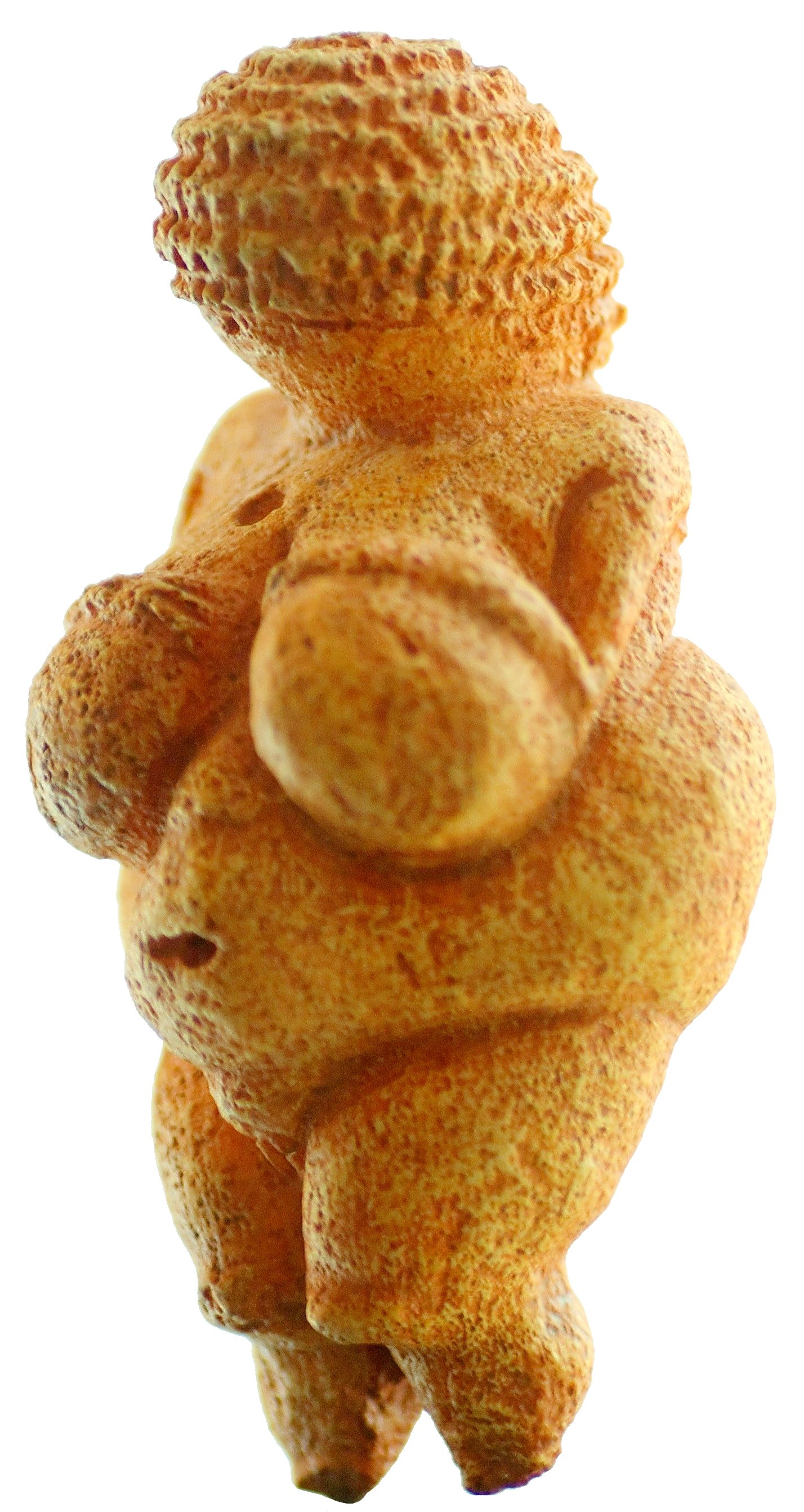
(Paleolithic Period) Venus of Willendorf: Made in-
25,000 BCE. (Western Europe)
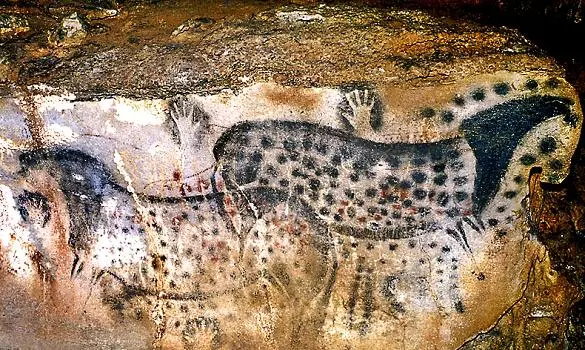
(Paleolithic Period) Spotted Horses and Human Hands: Made in-
Pech-Merle Cave, France. c. 25,000-24,000 BCE. (Western Europe)
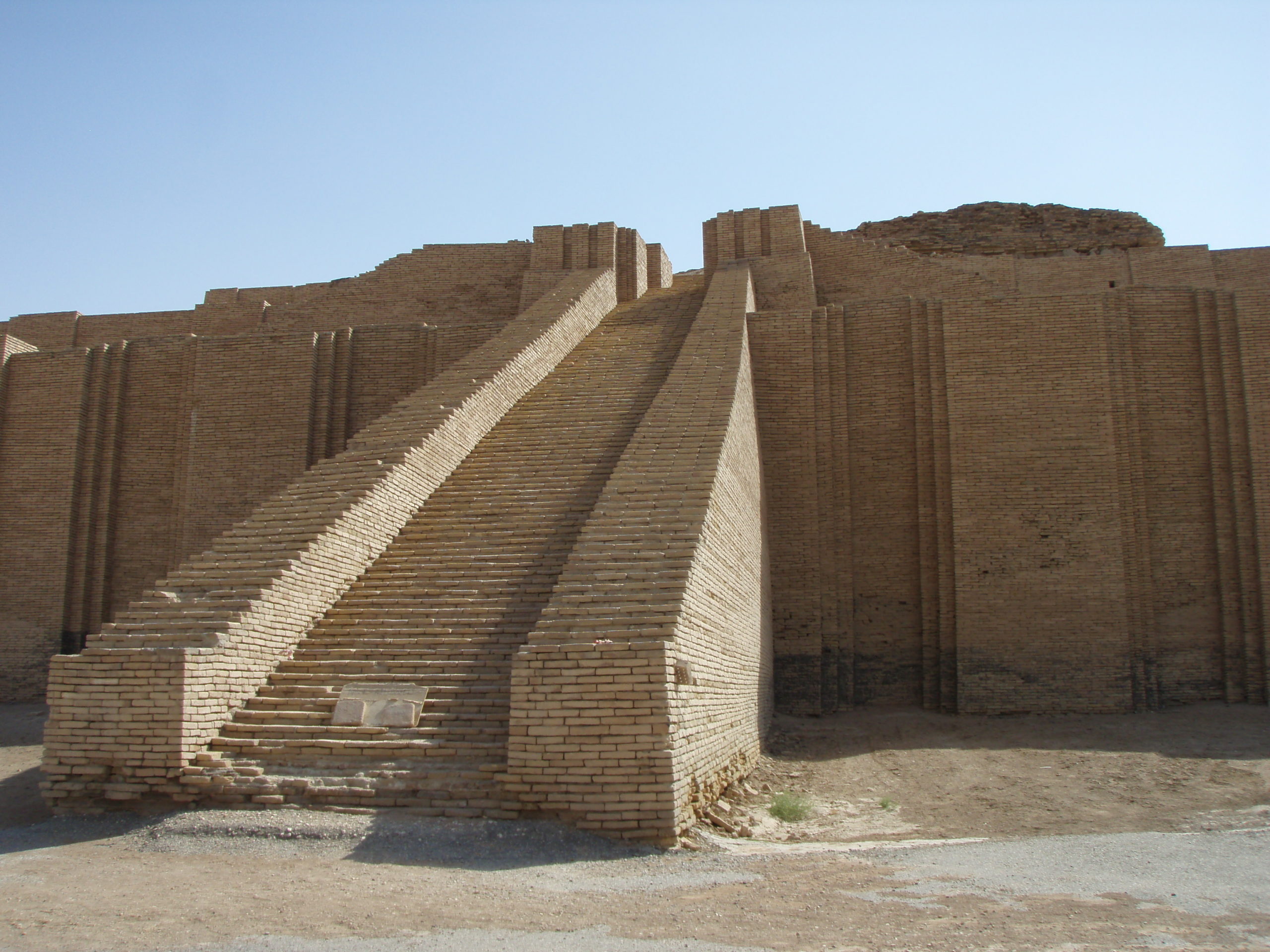
(Sumerian culture) Nanna Ziggurat: Made in-
Ur, Iraq, c. 2100 BCE
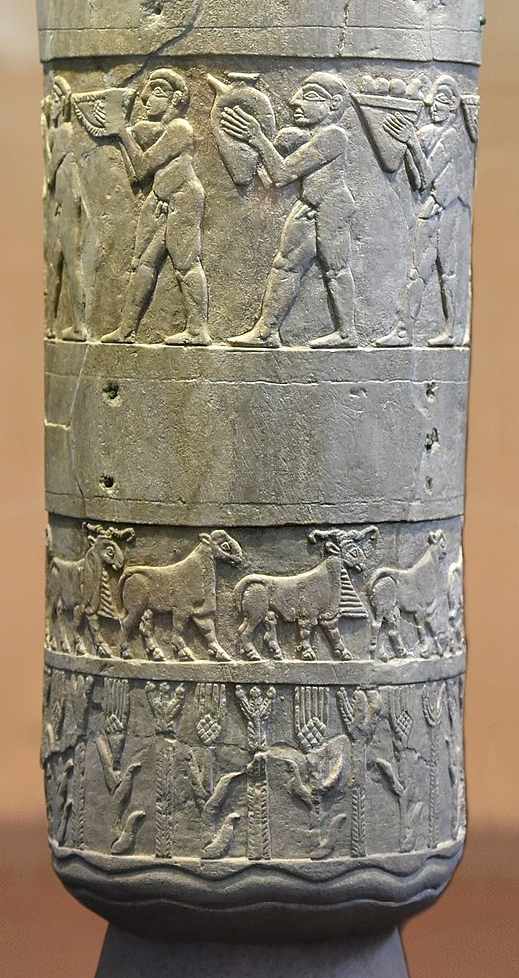
(Sumerian culture) Warka Vase: Made in-
Warka, Iraq, c. 31st c. BCE (3300-3000 BCE)
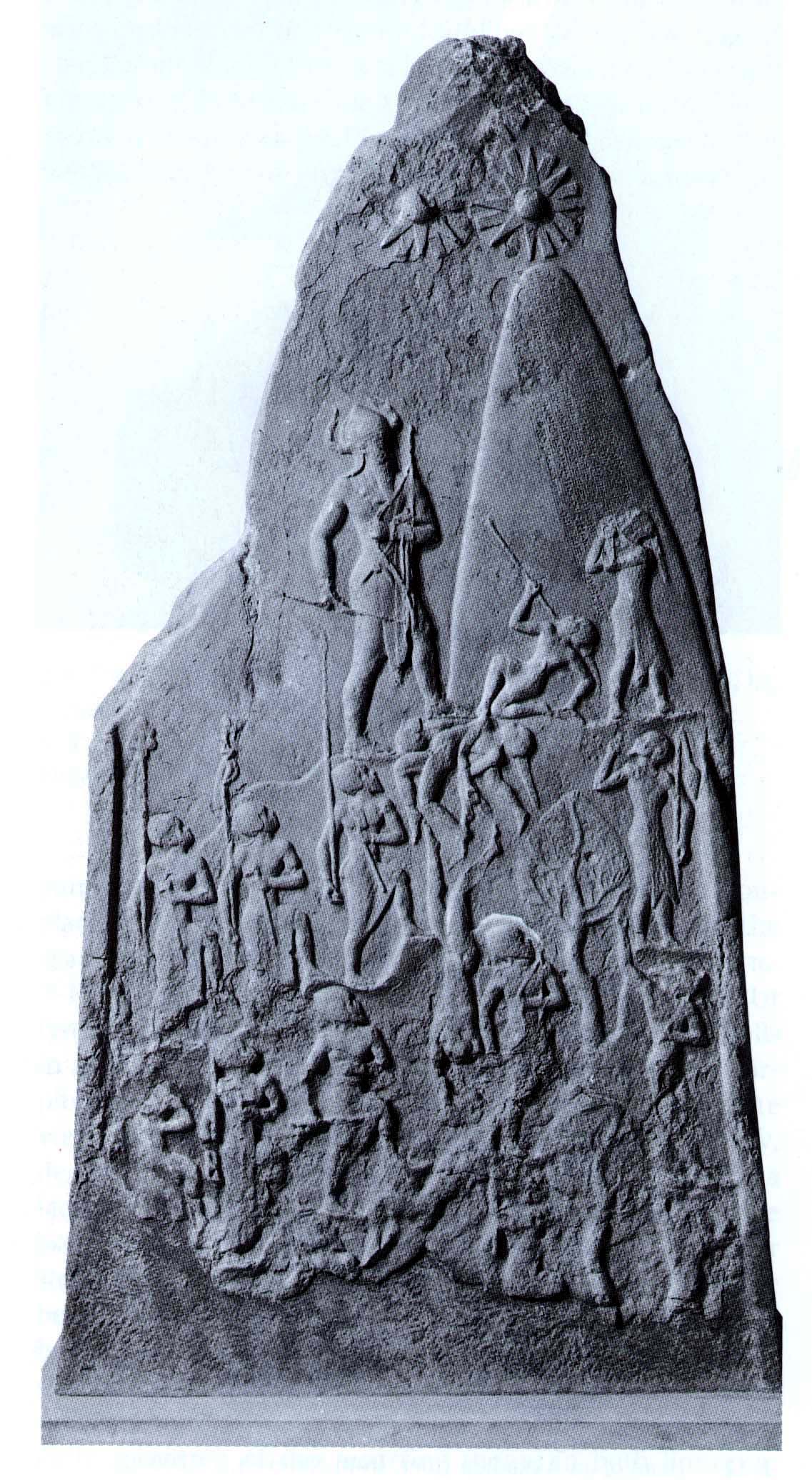
(Akkadian culture) Stele of Naram-Sin: Made in-
early-22nd c. BCE (c. 2220 BCE)
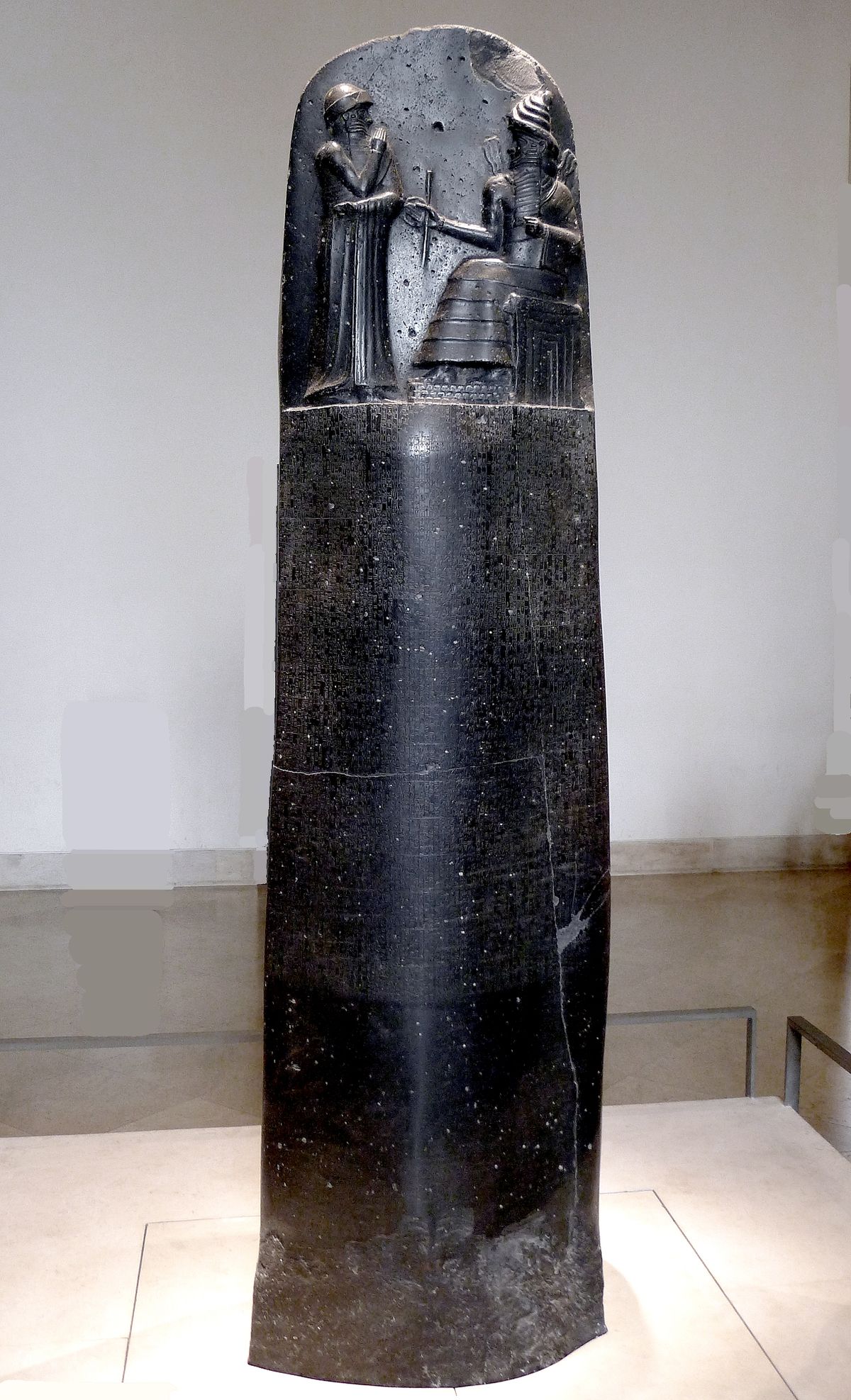
(Babylonian culture) Law Code of Hammurabi: Made in-
mid-18th c. BCE (1750 BCE)
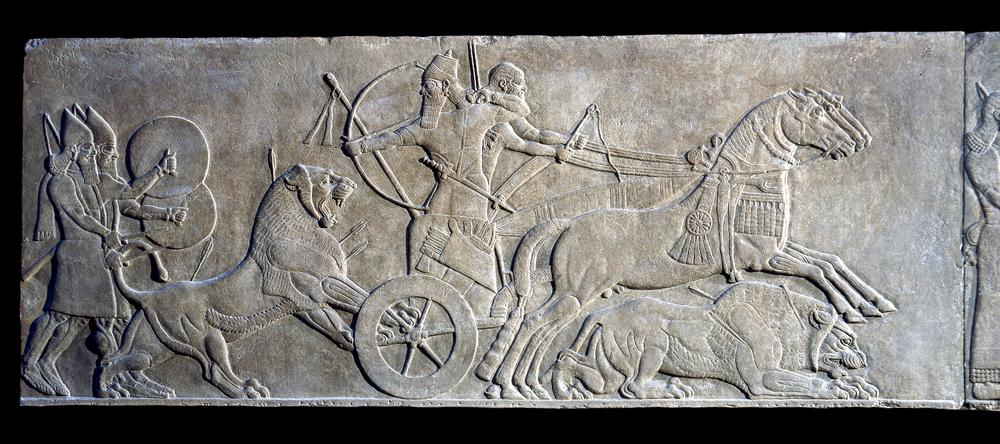
(Assyrian culture) Assurnasirpal II Hunting Lions: Made in-
mid-9th c. BCE (c. 860 BCE)
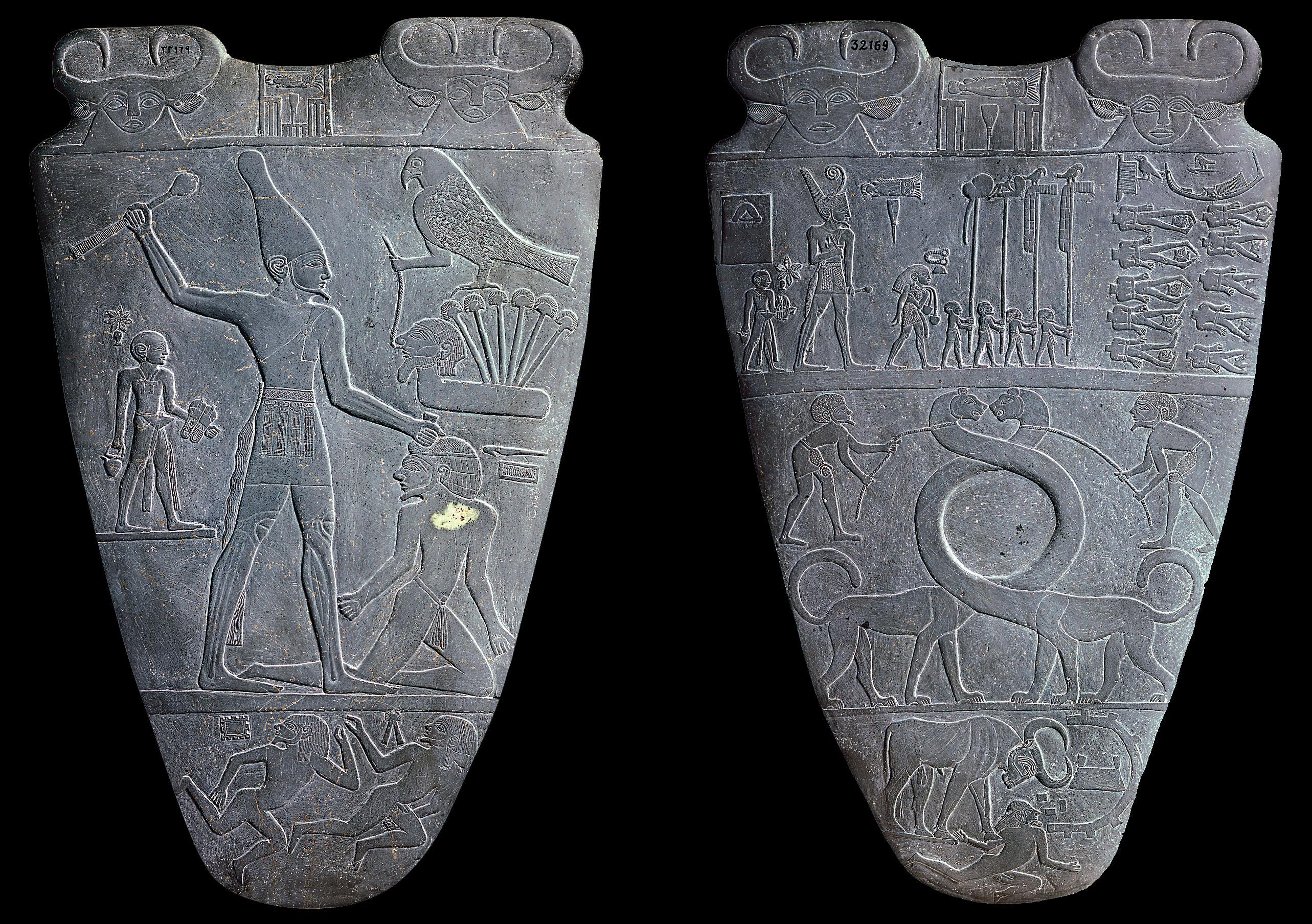
(Egypt) Early Dynastic Period): Palette of Narmer: Made in-
c. 3000 BCE

(Egypt) Old Kingdom): Great Pyramids at Giza: Made in-
c. 2500 BCE; Great Sphinx
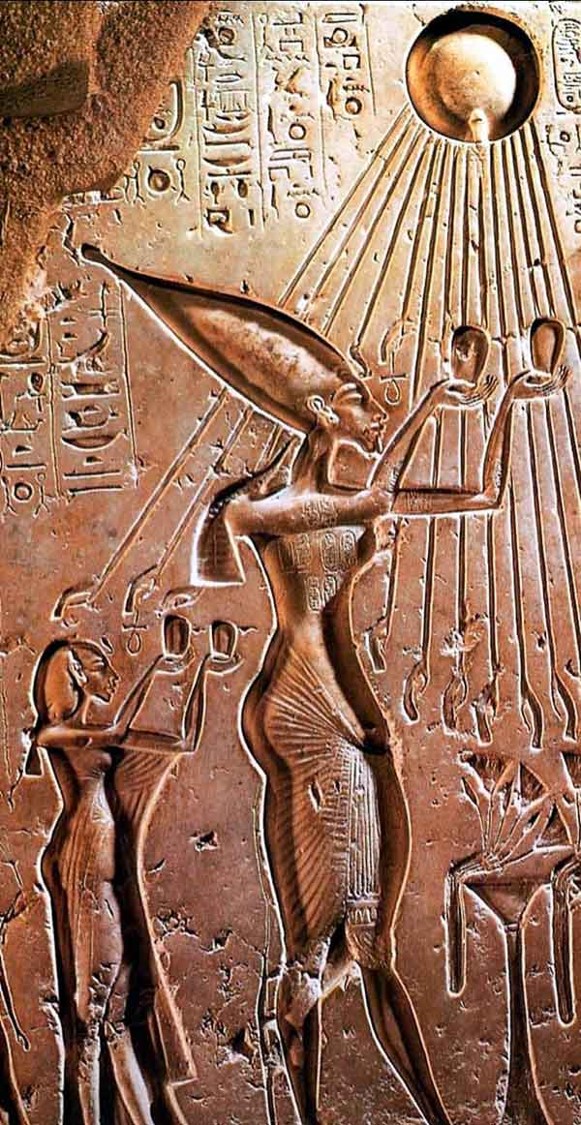
(Egypt) New Kingdom:) Akhenaton and Nefertiti Worshipping the Aton: Made in-
Mid-14th c. BCE (1365-1349 BCE)
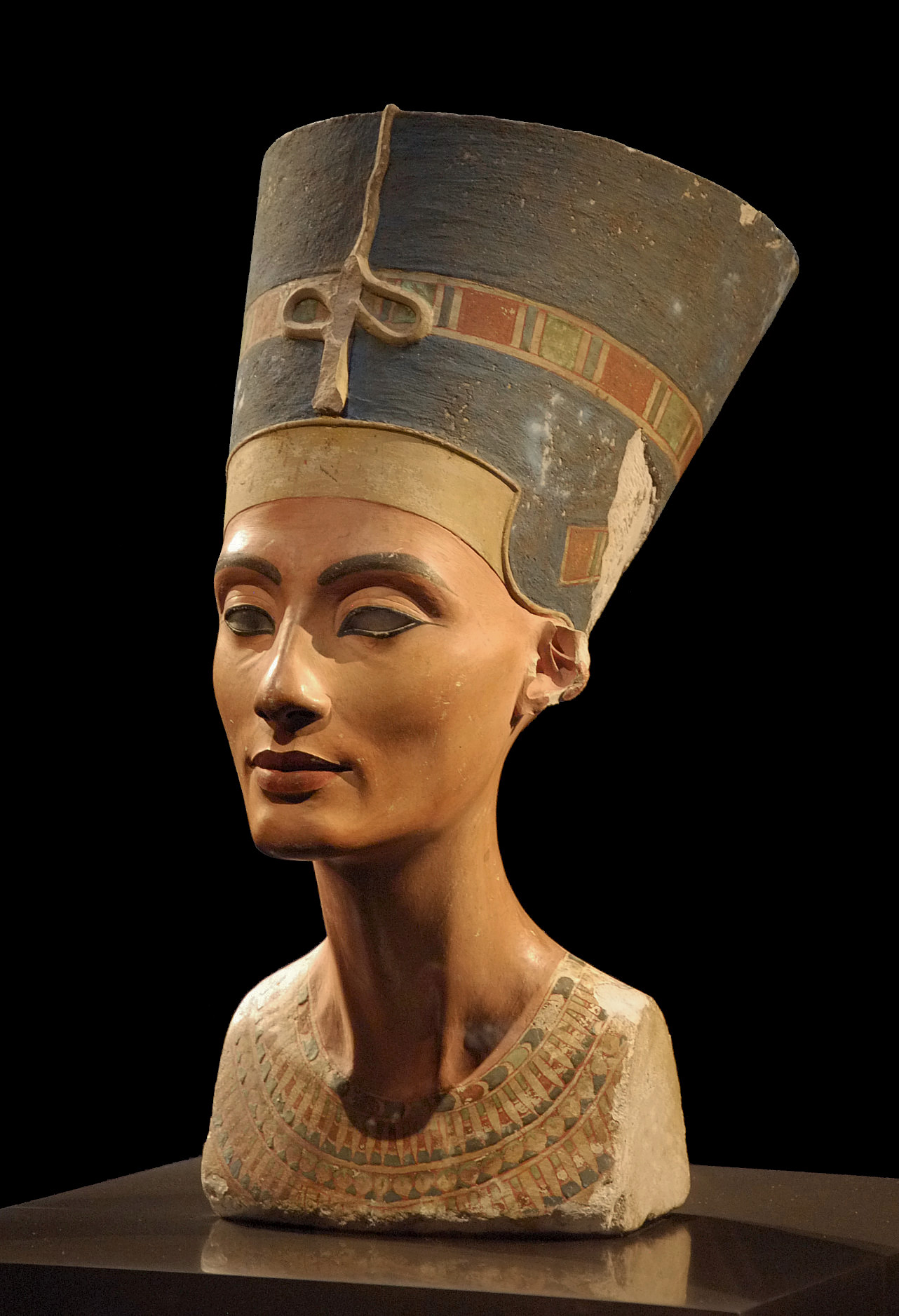
(Egypt) New Kingdom:) Thutmose, Bust of Nefertiti: Made in-
early-14th c. BCE (c. 1330 BCE)
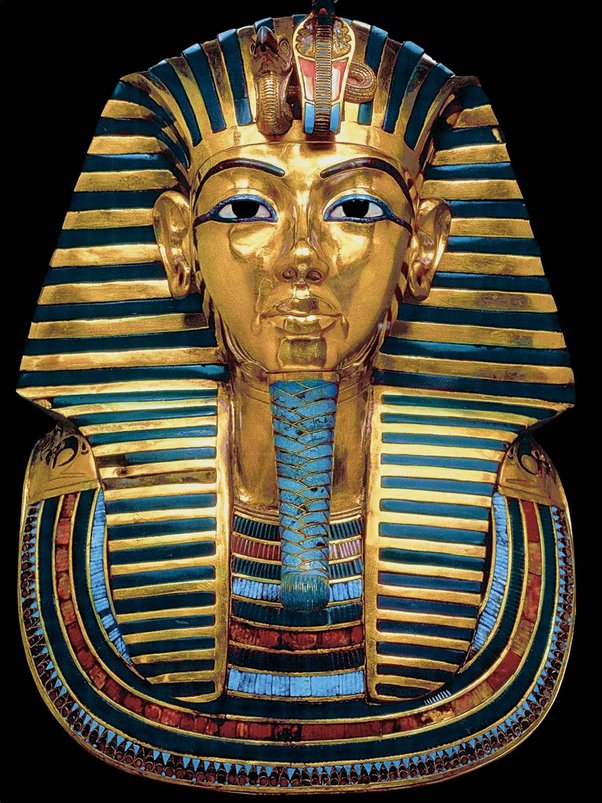
(Egypt) New Kingdom:) Funerary Mask of Tutankhamen: Made in-
early-4th c. BCE (1333-1323 BCE)
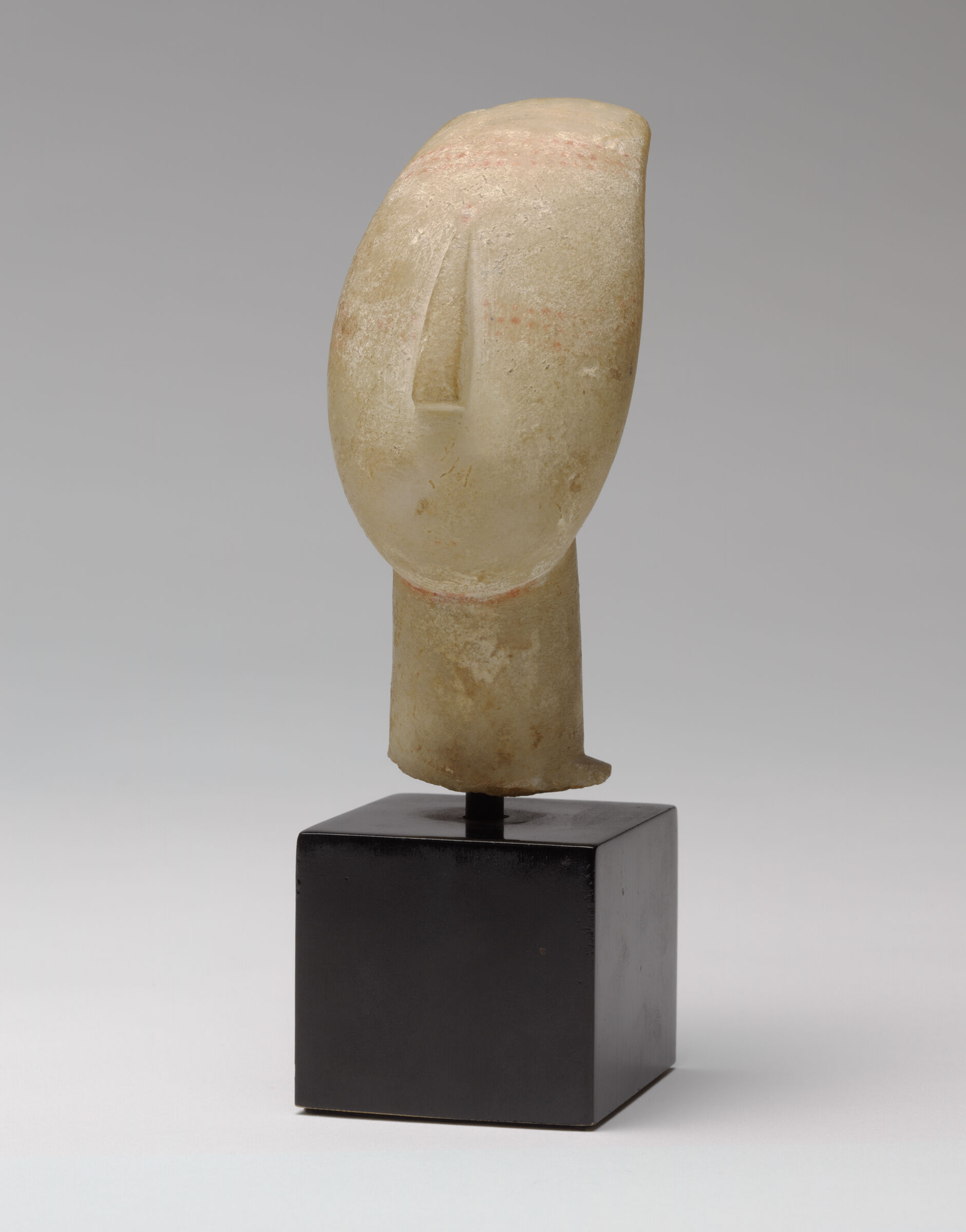
(Aegean) Cycladic culture) Cycladic Head: Made in-
Marble, 2700-2300 BCE
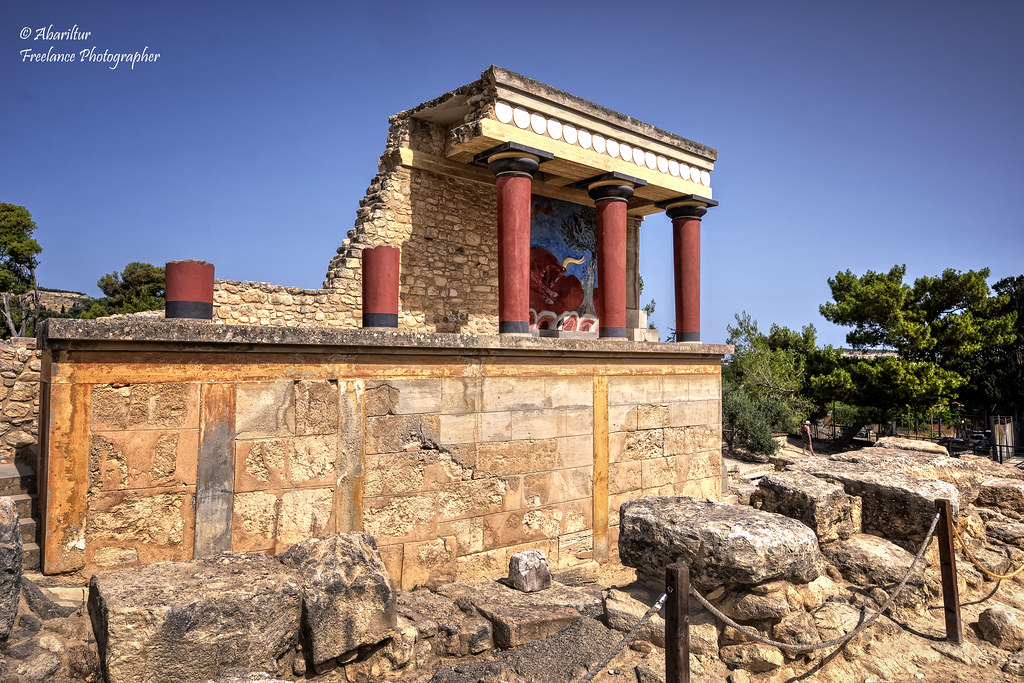
(Aegean) Minoan culture) north east entrance to the Palace at Knossos: Made in-
Crete [Greece], with reconstructed columns, 1500 BCE
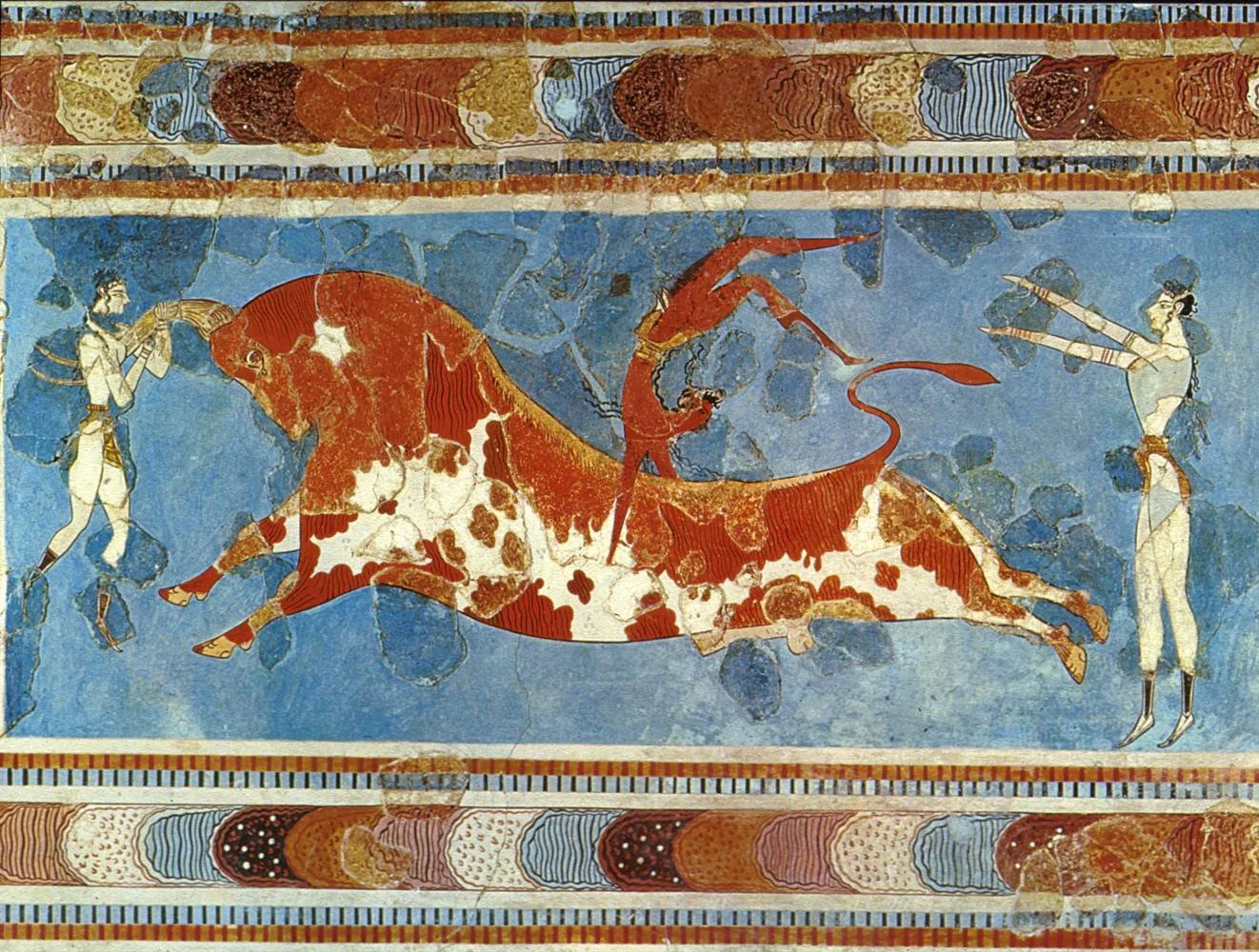
(Aegean) Minoan culture) Toreador Fresco: Made in-
wall painting from the Palace at Knossos, Crete [Greece], c. 1500 BCE
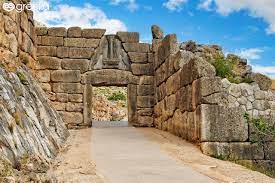
(Aegean) Mycenaean culture) Lion Gate: Made in-
Citadel at Mycenae, Mycenae [Greece], mid-13th c. BCE (1250 BCE)
(Archaic Period)
The period of artistic development in Greece from about 650 to 480 bc
(Classical Period)
lasted from the latter half of the eighteenth century through the early nineteenth century
(Hellenistic Period)
Generally taken to begin with the death of Alexander the Great in 323 BCE and end with the conquest of the Greek world by the Romans
(Etruscan)
Flourished in central Italy between the 8th and 3rd century BCE, is renowned for its vitality and often vivid colouring. Wall paintings were especially vibrant and frequently capture scenes of Etruscans enjoying themselves at parties and banquets.
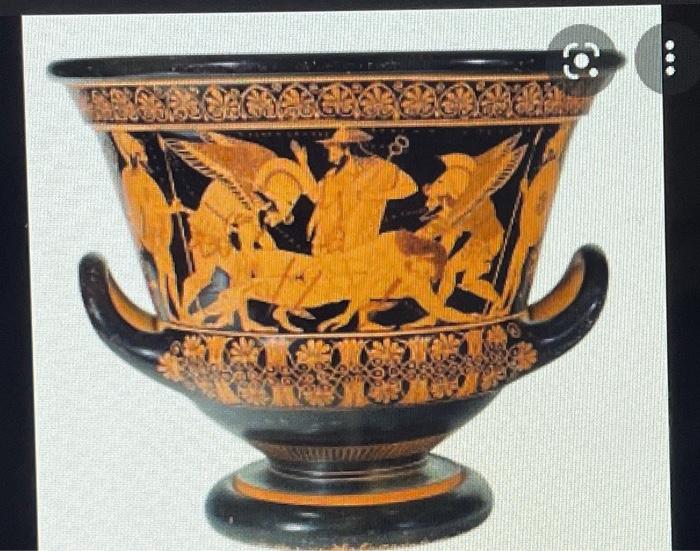
(Archaic Period) Sleep and Death Carrying Sarpedon from the Battlefield: Made in-
Early-6th c. BCE (515 BCE). Red-figure calyx-krater.
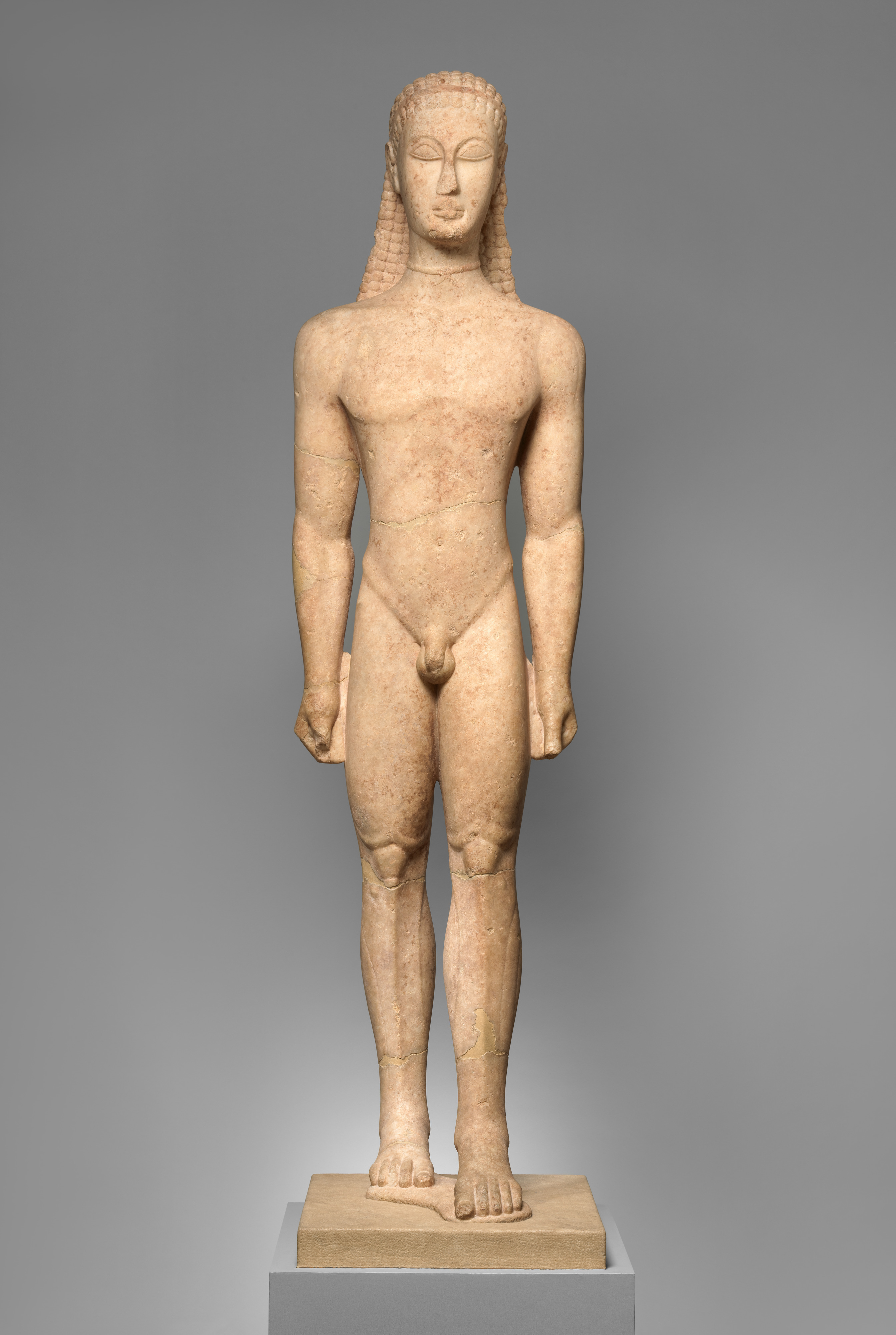
(Archaic Period) New York Kouros: Made in-
c. 600 BCE. Marble
(Classical Period) Doryphoros (Spear Bearer): Made in-
Roman copy after the original bronze. early-5th century BCE (420 BCE). Marble.
(Classical Period) Doryphoros (Spear Bearer): Made by-
Polykleitos
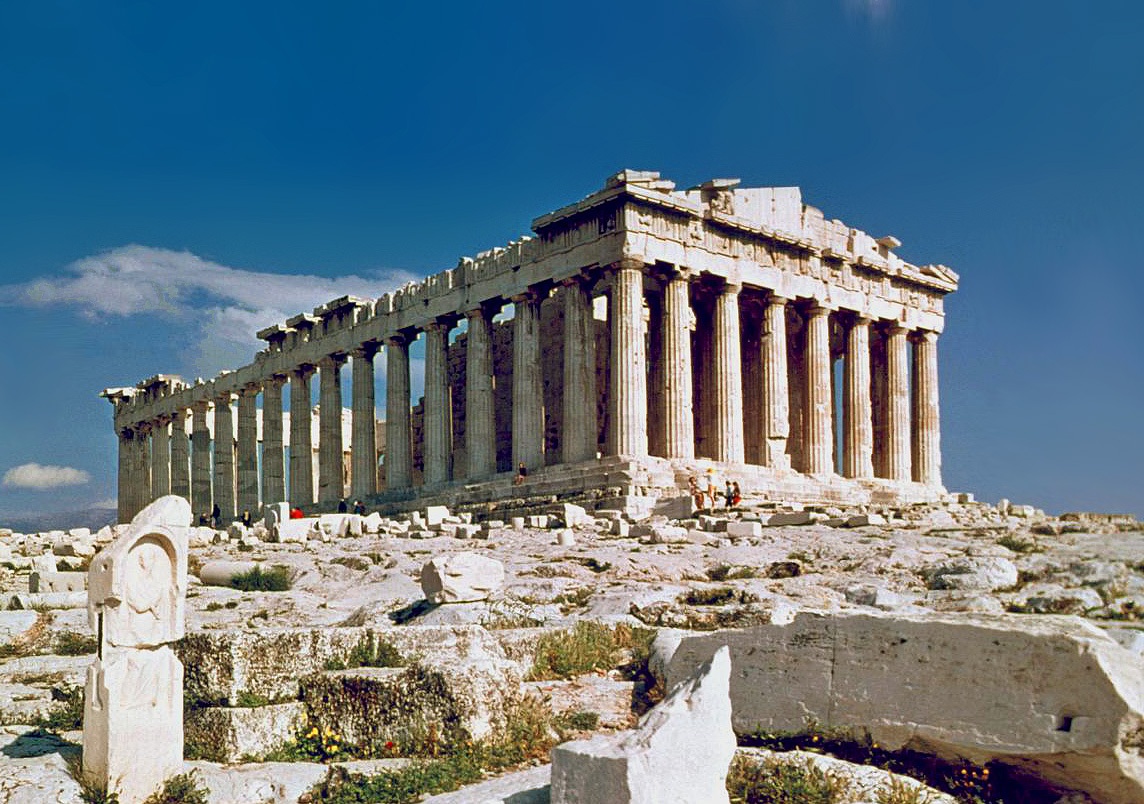
(Classical Period) Parthenon, Acropolis: Made in-
Athens, Greece. mid-5th century BCE (440BCE). Marble

(Hellenistic Period) Gaul Killing Himself and his Wife: Made in-
Roman copy after the original bronze. early-3rd century. BCE (220 BCE)
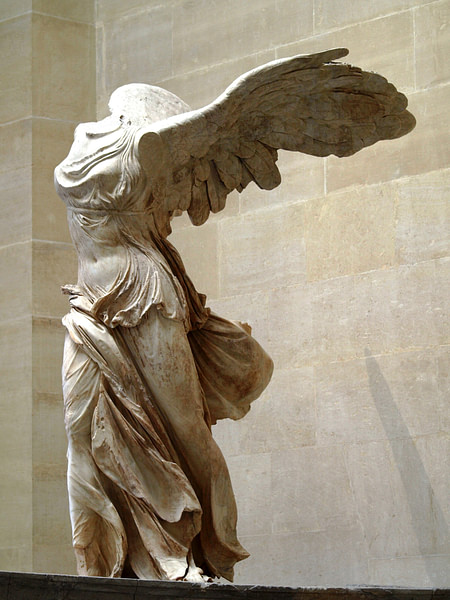
(Hellenistic Period) Nike of Samothrace: Made in-
From the Sanctuary of the Great Gods, Samothrace [Greece], late-2nd c. BCE (180 BCE). Marble.
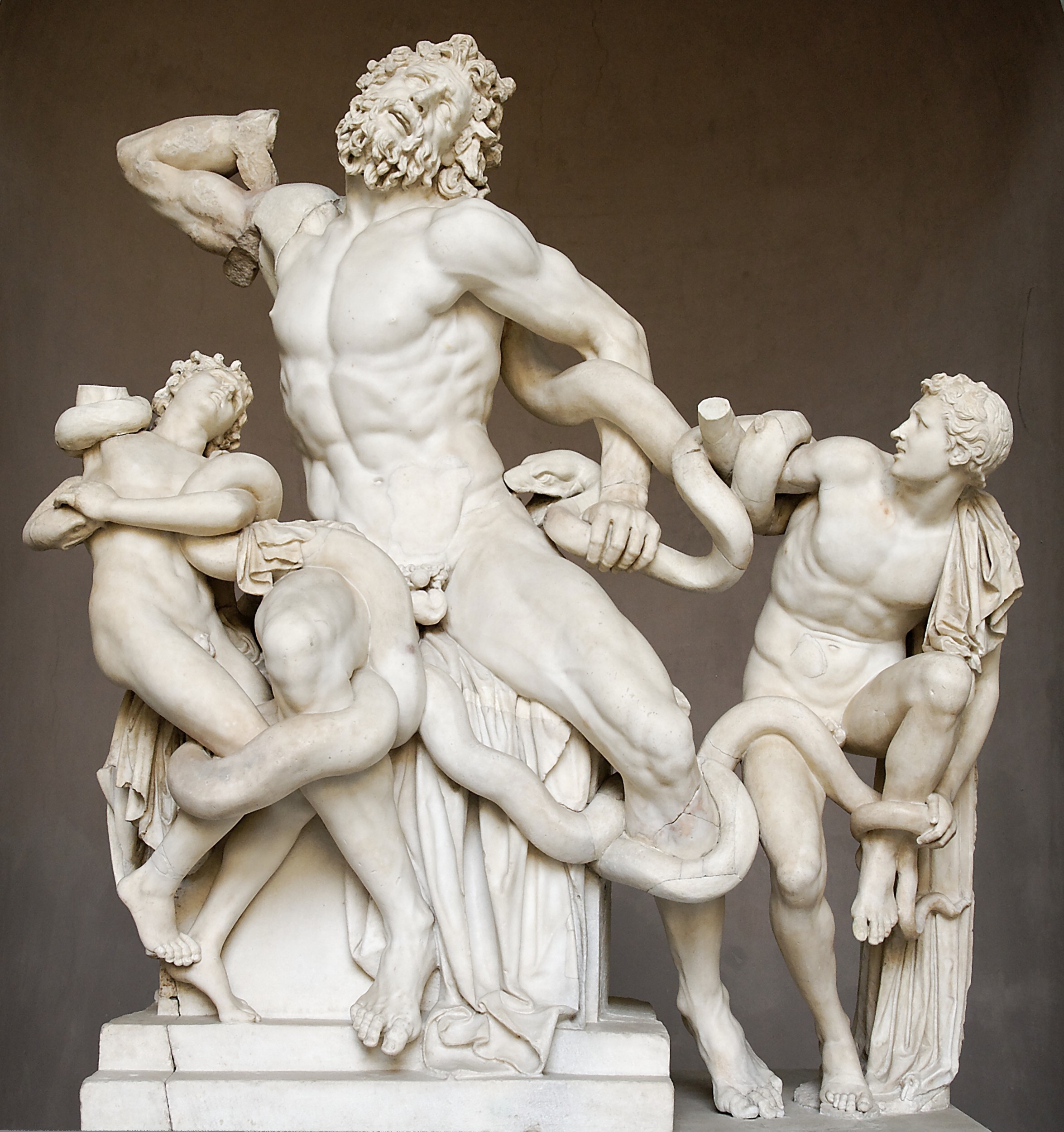
(Hellenistic Period) Laocoön Group: Made in-
Roman copy of a Greek Hellenistic statue, early-1st c. BCE (25 BCE). Marble.
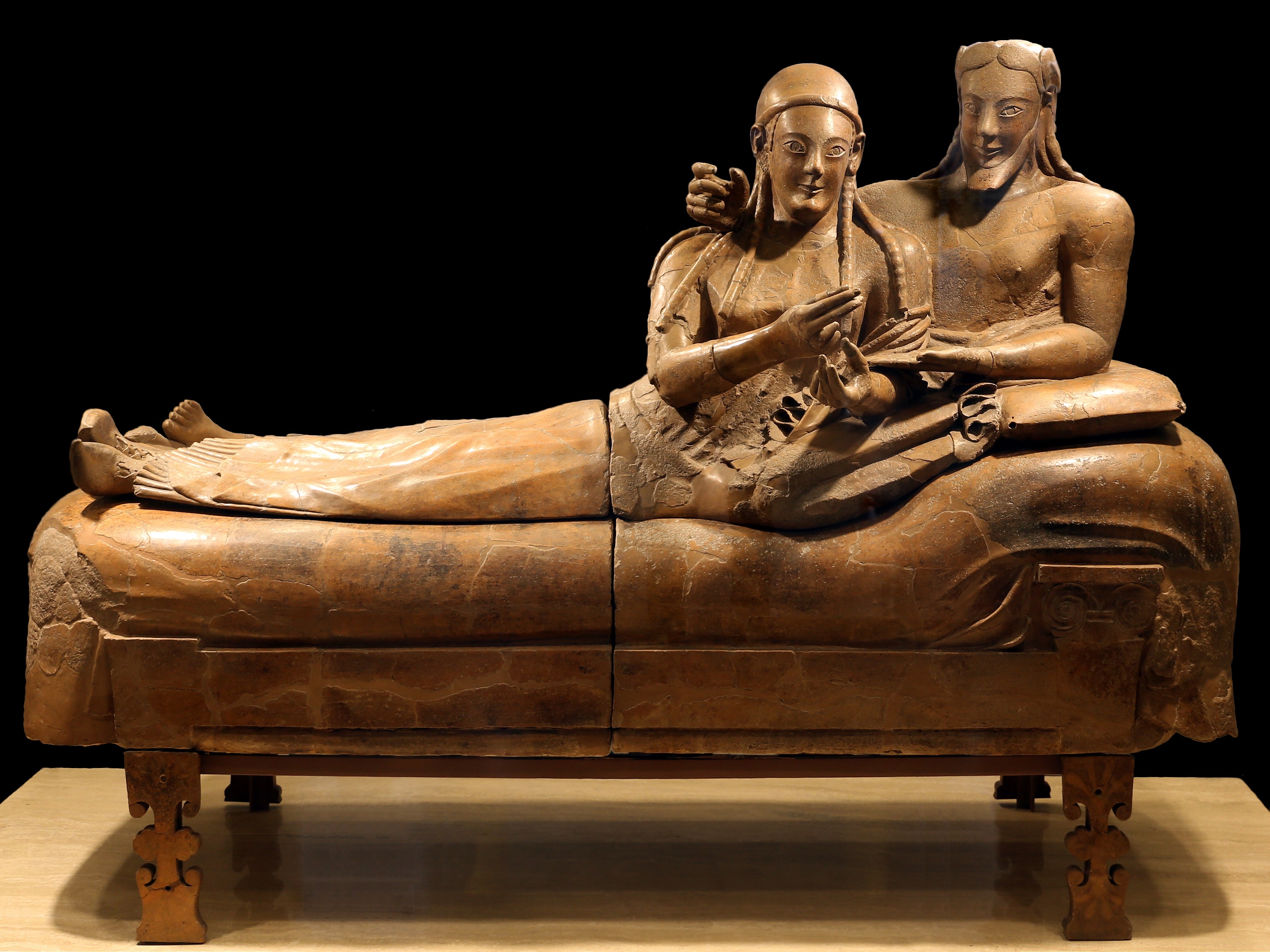
(Etruscan) Sarcophagus from Cerveteri: Made in-
Early-6th c. BCE (520 BCE). Painted terracotta
(Roman) She Wolf: Made in-
c. 500 BCE. Bronze.
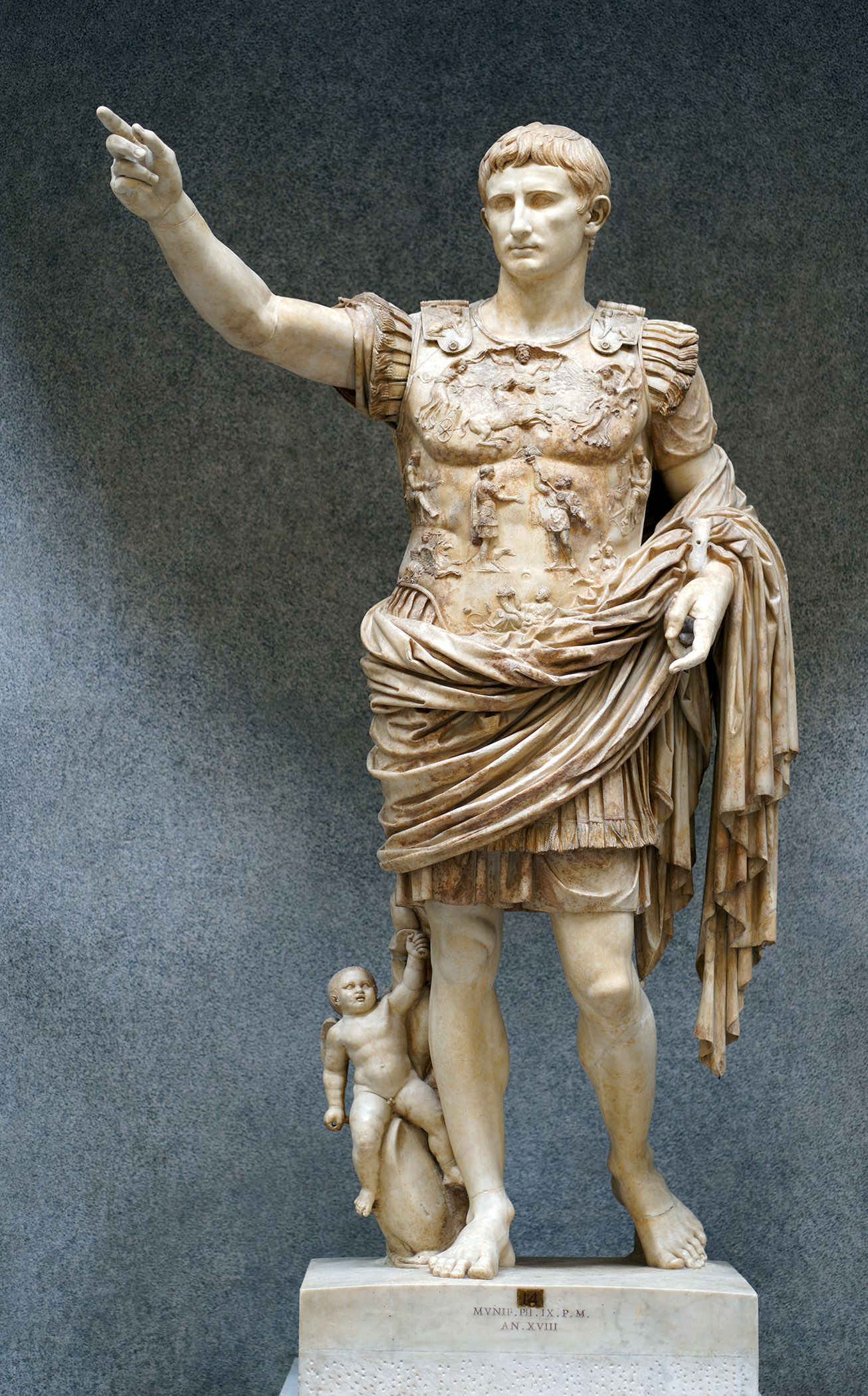
(Roman) Augustus of Prima Porta: Made in-
c. 1st century. Marble.

(Roman) Colosseum: Made in-
Rome, Italy. late-1st century (75 CE).
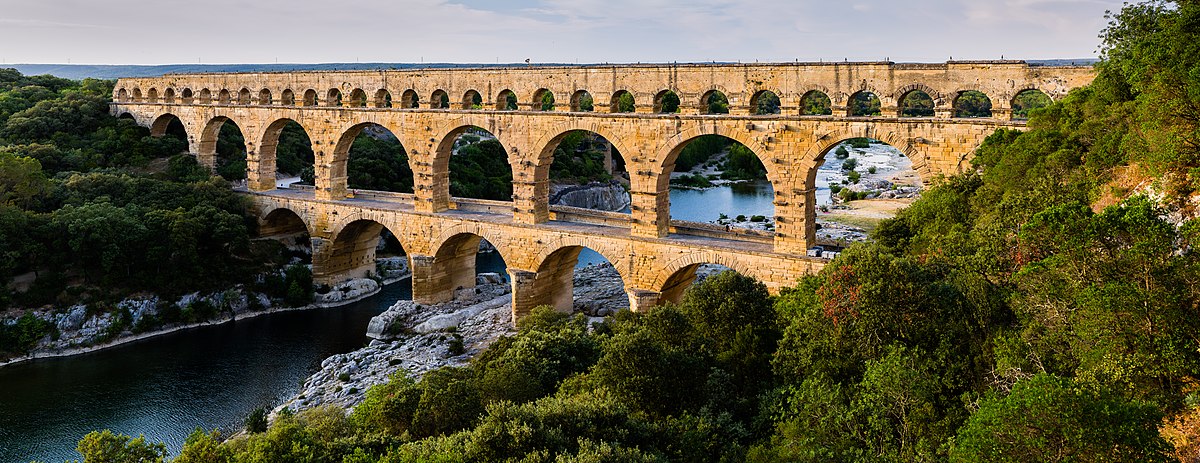
(Roman) Pont du Gard: Made in-
Nimes, France. 1st century CE.
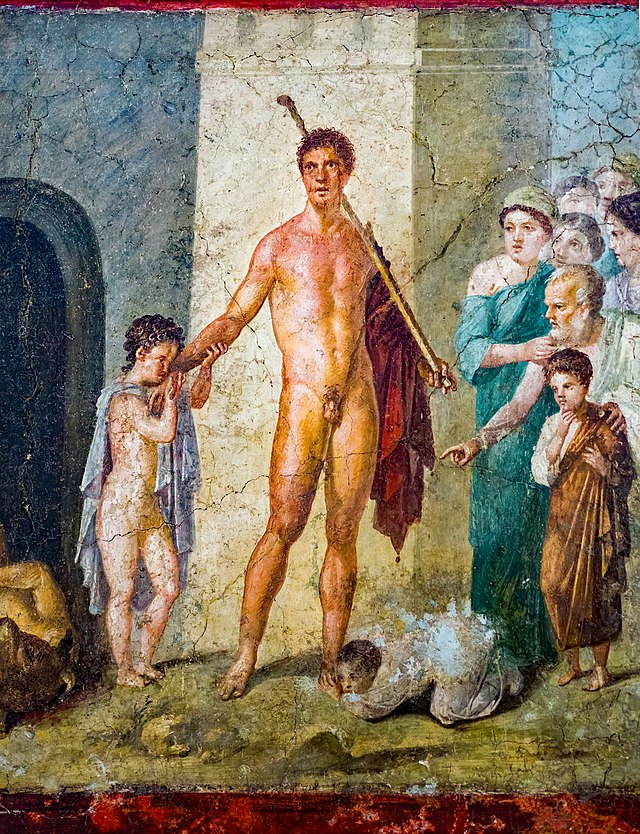
(Roman) Theseus after Killing the Minotaur: Made in-
Pompeii, Italy. c. 1st century. Fresco.
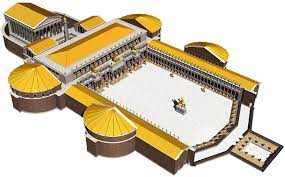
(Roman) Trajan’s Basilica: Made in-
Forum of Trajan, Rome, Italy. early-2nd century(110 CE).
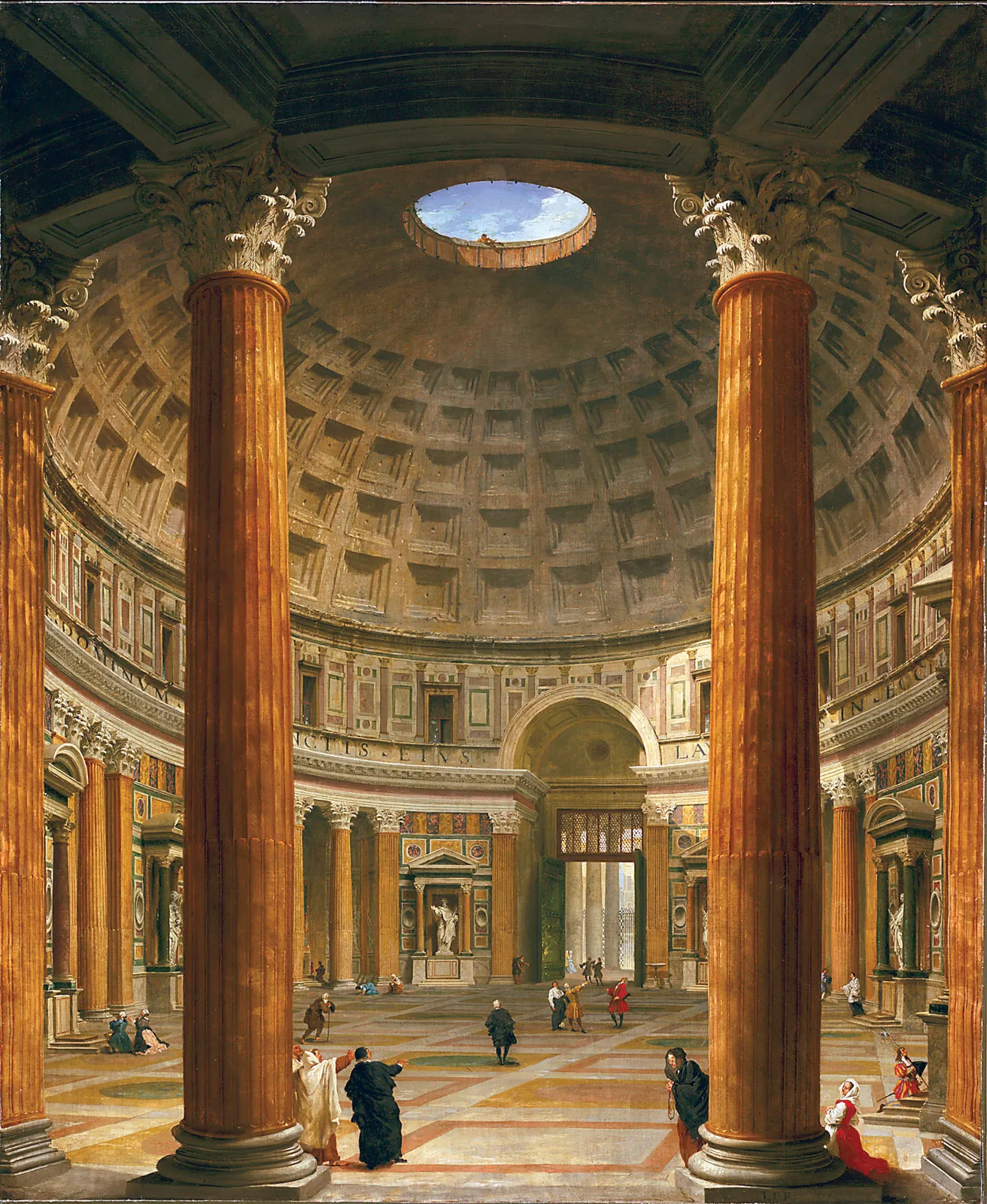
(Roman) Pantheon: Made in-
Rome, early-2nd century (120 CE).
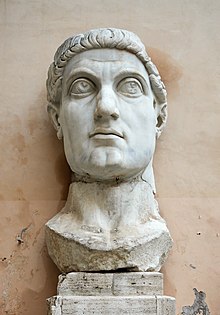
(Roman) Constantine the Great: Made in-
From the Basilica of Maximus and Constantine, Rome, Italy. early-4th century (325 CE). Marble.
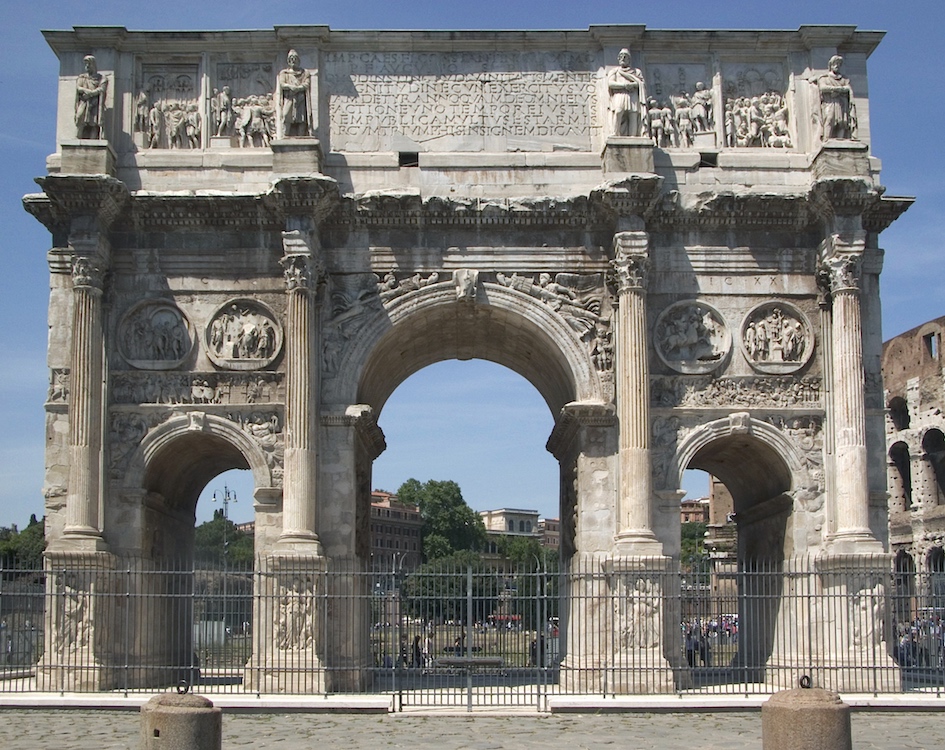
(Roman) Arch of Constantine: Made in-
Rome, Italy. early-4th century (c. 313 CE).
(Byzantine)
(4th - 15th century CE) is generally characterised by a move away from the naturalism of the Classical tradition towards the more abstract and universal.
(Carolingian)
Comes from the Frankish Empire from about 780 to 900 CE, during the reign of Charlemagne and his immediate heirs.
(Anglo-Saxon)
Illumination and architecture produced in Britain from about the 7th century to the Norman Conquest of 1066.
(Hiberno-Saxon)
Especially of manuscript illumination, developed principally during the 7th and 8th centuries a.d. in the monastic scriptoria founded by Irish missionaries,
(Romanesque)
Was at its height between 1075 and 1125 in France, Italy, Britain, and the German lands
(Gothic)
Medieval art that developed in Northern France out of Romanesque art in the 12th century AD,
Syncretism
The mixing and melding of various aspects of different cultures
Mosaic
A pattern or image made of small regular or irregular pieces of colored stone, glass or ceramic, held in place by plaster/mortar, and covering a surface
Nave
The central longitudinal space of a bascilican church
Pendentive
A spherical triangle which acts as a transition between a circular dome and a square base on which the dome is set.
Minaret
a tall tower attached or adjacent to a mosque.
icon
a picture of Christ on a panel used as an object of devotion in the orthodox Greek Church from at least the seventh century on.
iconoclast vs. iconophile
(Greek for “breakers of images”) refers to those who opposed icons.
mihrab
a niche in the wall of a mosque or religious school (madrasa) that indicates the direction of Mecca (qibla), which Muslims face when praying.
qibla
the wall in a mosque oriented toward Mecca that indicates the direction of prayer for the congregation.
pilgrimage
a context for the interactions between pilgrims, people involved in the devotional practice of pilgrimage, and the art and architecture they encountered.
illuminations
hand-written books with painted decoration that generally includes precious metals such as gold or silver
Romanesque
19th-century art historians to refer specifically to the architecture of the time period, which retained many basic features of Roman architectural style—most notably semi-circular arches—but retained distinctive regional characteristics.
Gothic
a style of medieval art that developed in Northern France out of Romanesque art in the 12th century AD, led by the concurrent development of Gothic architecture.

(Early Christian) The Good Shepherd: Made in-
c. 300. Marble.
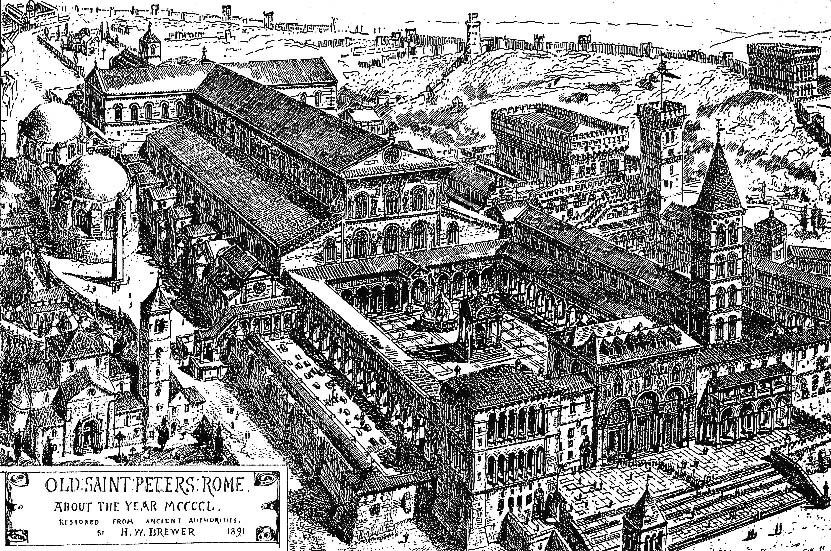
(Early Christian) Old Saint Peter’s: Made in-
Rome. early-4th c. (c.318).
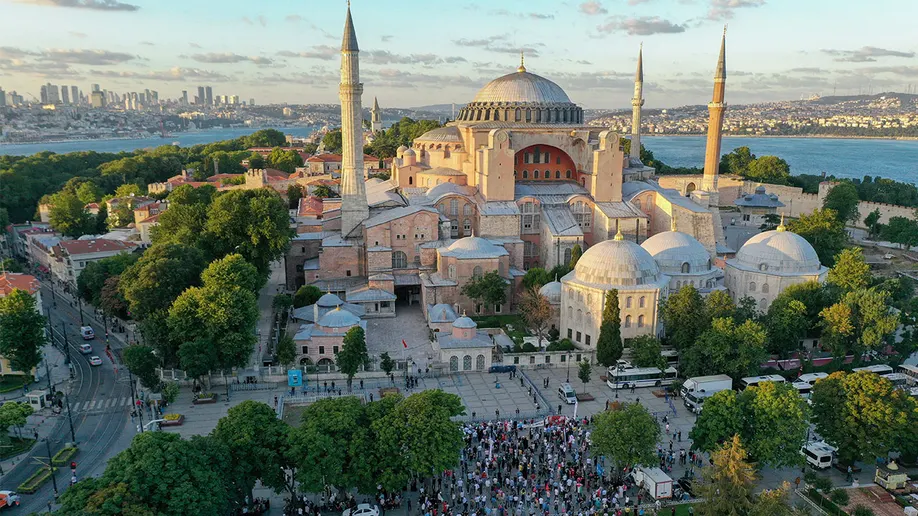
(Byzantine) Church of Hagia Sophia: Made in-
modern Istanbul, Turkey, early-6th c. (c. 537).
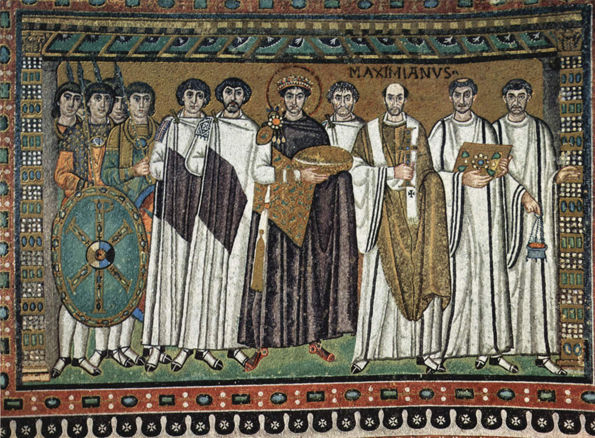
(Byzantine) Court of Justinian and Court of Theodora, Basilica of San Vitale: Made in-
Ravenna, Italy, mid-6th c. (c.547). Mosaic
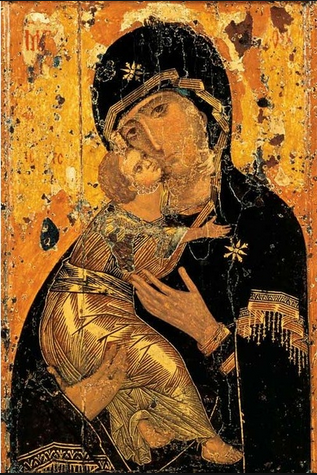
(Byzantine) Virgin of Vladimir: Made in-
early-12th c. (c. 1131). Icon, tempera on panel.
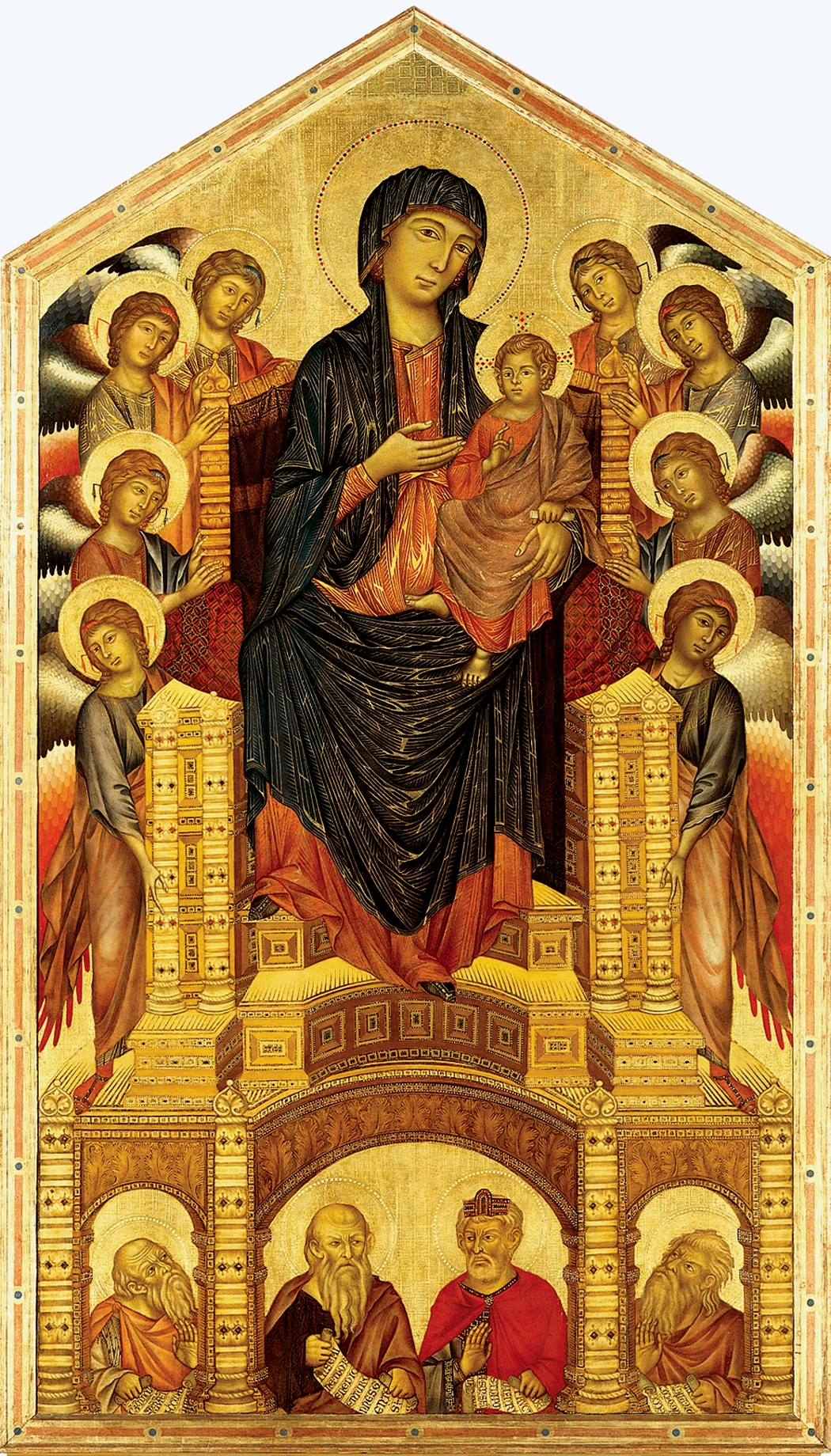
(Byzantine) Cimabue, Madonna Enthroned: Made in-
late-13th c. (c. 1280). Altarpiece, tempera on wood
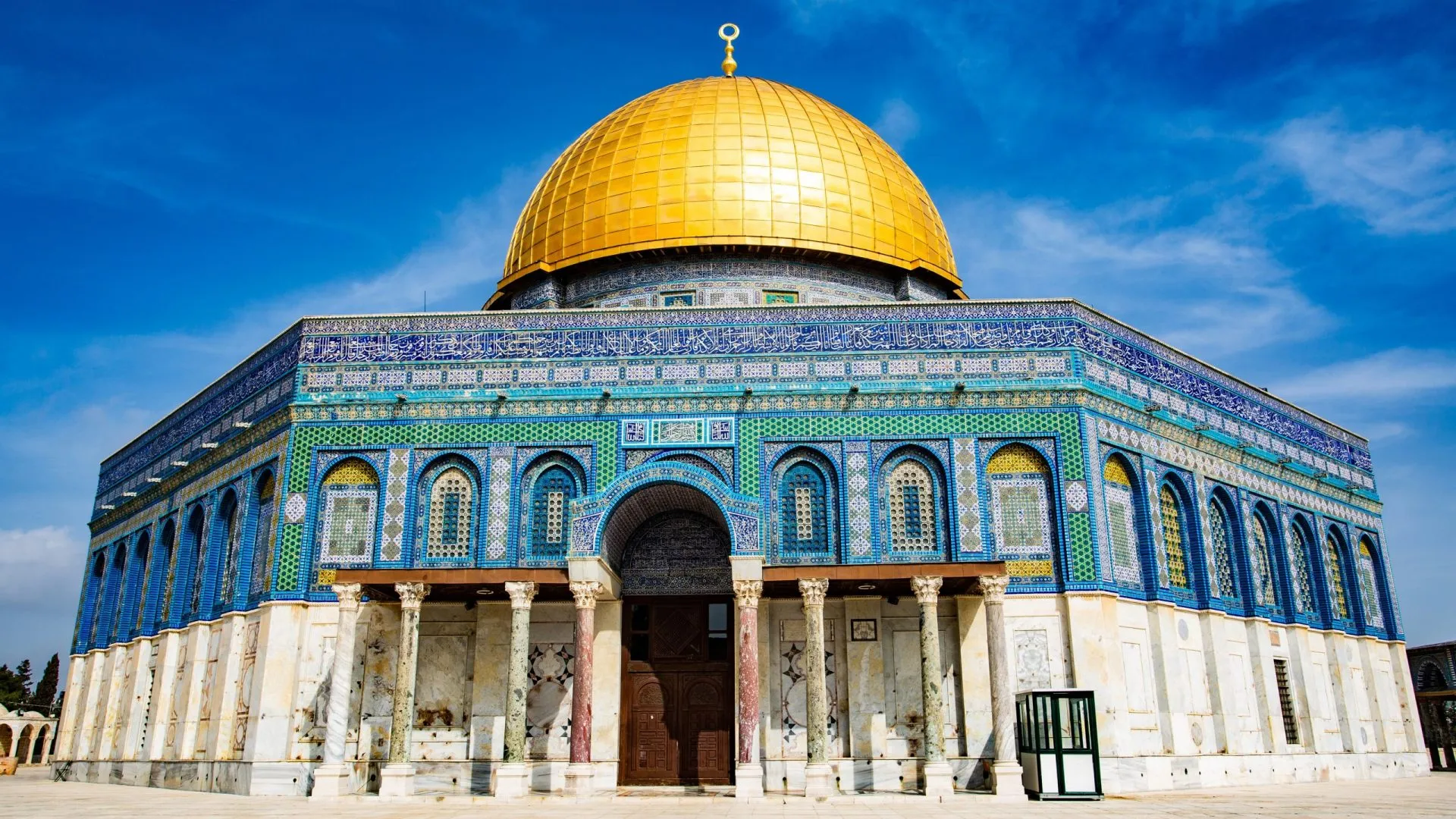
(Islamic) Dome of the Rock: Made in-
Jerusalem, Israel, begun late-7th c. (691).
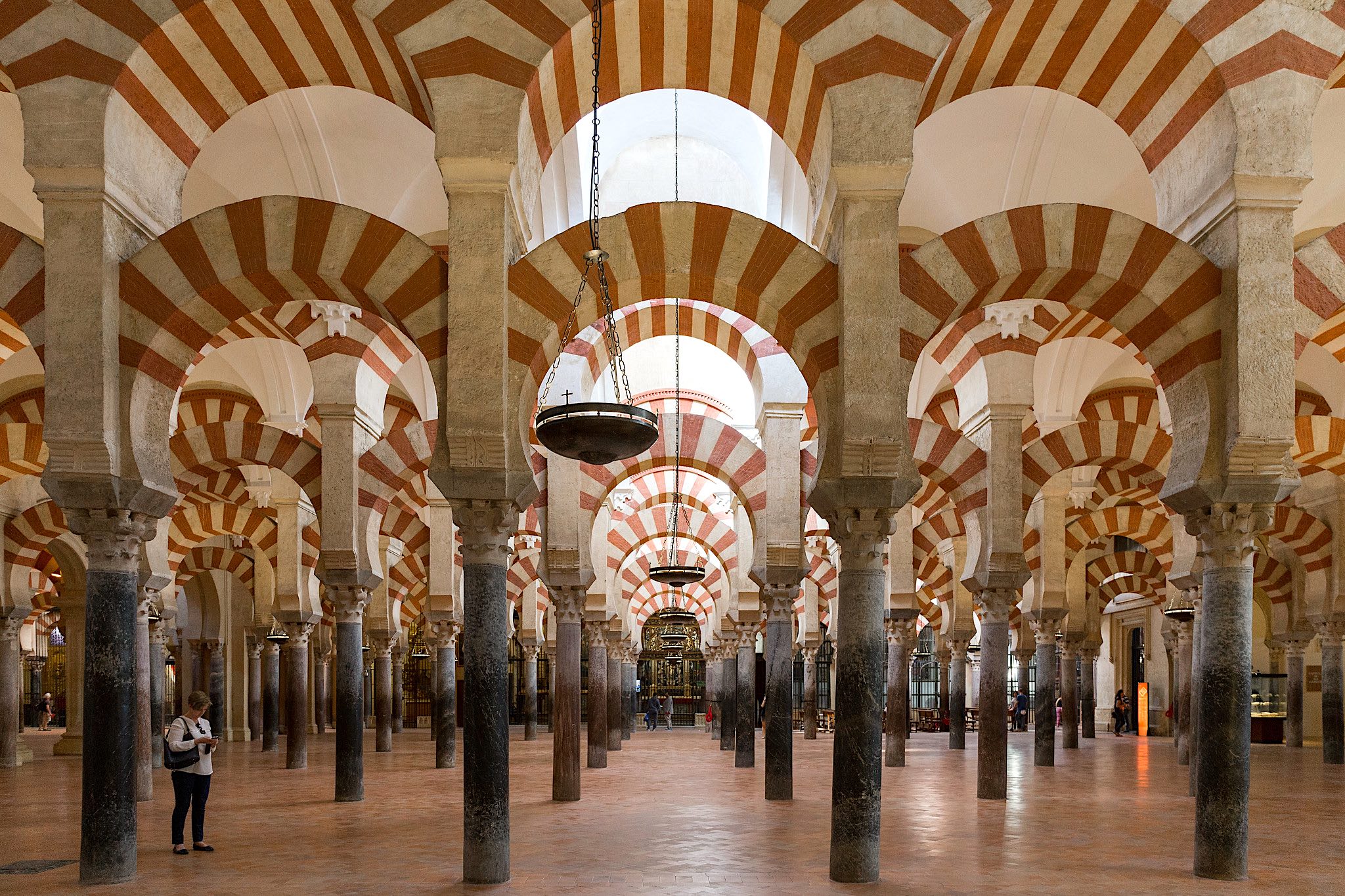
(Islamic) Great Mosque at Córdoba: Made in-
Spain, begun late-8th c. (c. 786). prayer hall with double horseshoe arches mihrab (niche in the qibla wall)
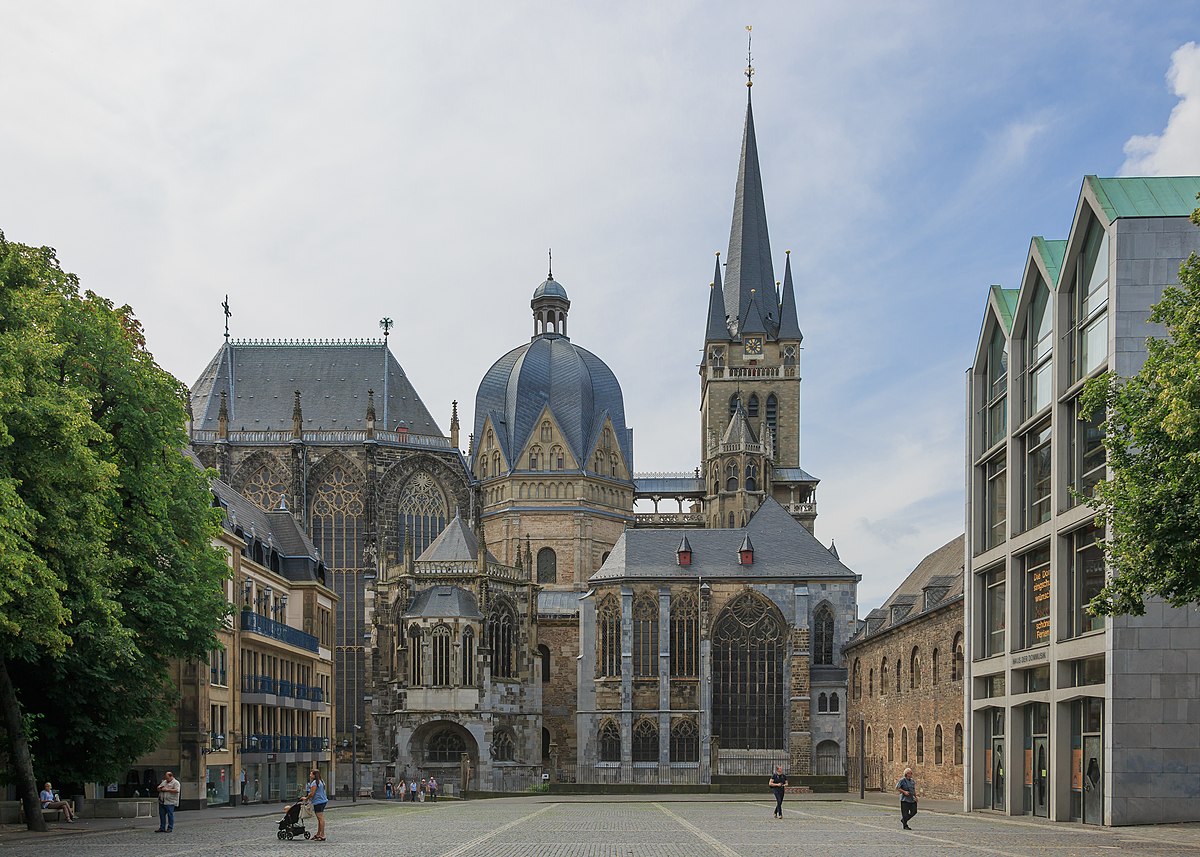
(Carolingian) Carolingian Empire: Made in-
Palace Chapel of Charlemagne, Aachen, Germany, c. 800.

(Anglo-Saxon) Buckle from Sutton Hoo: Made in-
c. 7th century. Gold
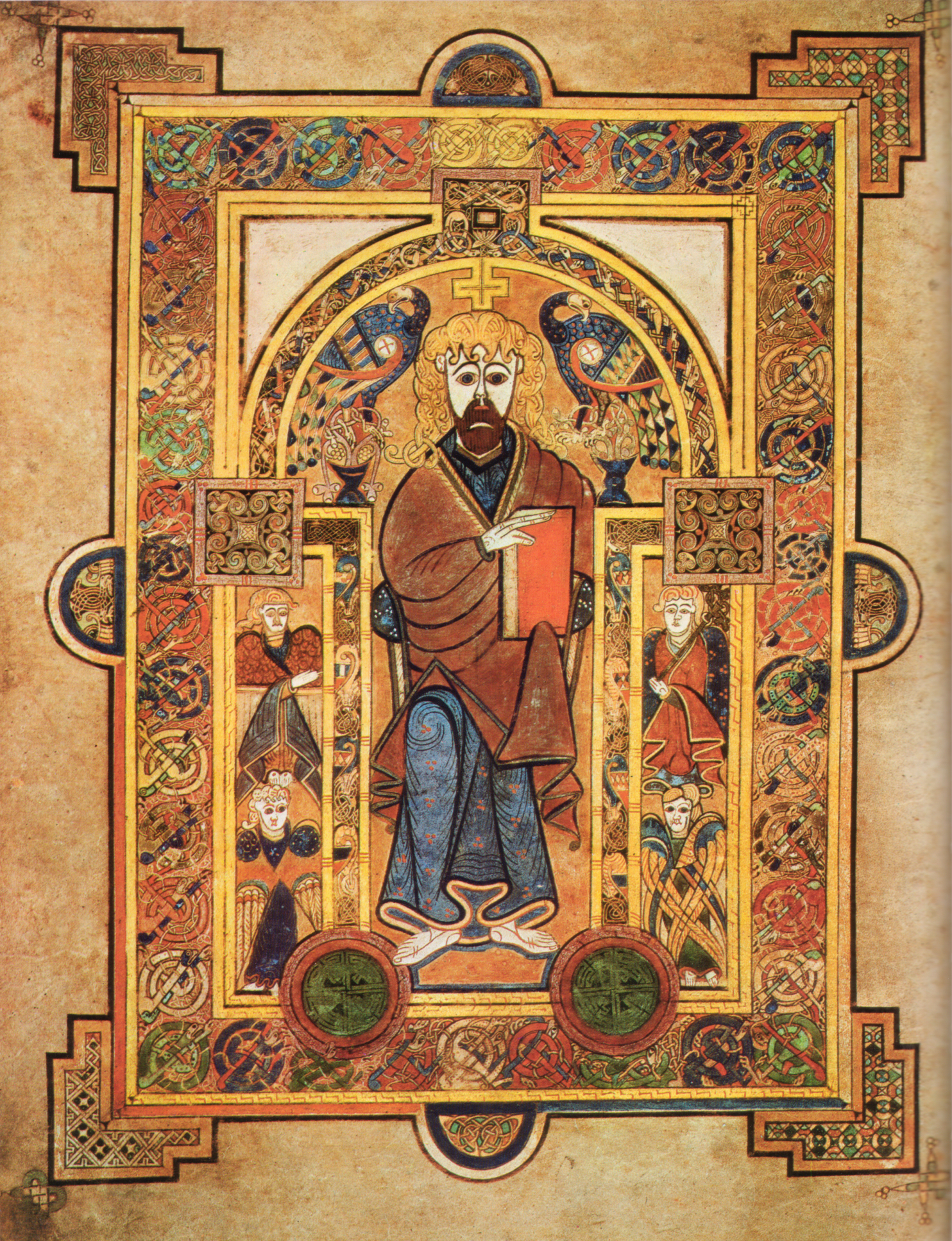
m the Book of Kells: Made in-
c. 800 Illuminated manuscript.
(Romanesque) Church of Sainte-Marie-Madelaine: Made in-
Vézelay, France, begun late-11th c. (c. 1089)
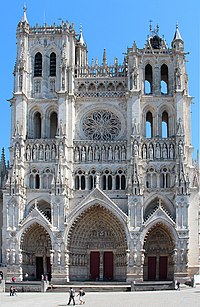
(Gothic) Amiens Cathedral: Made in-
Amiens, France, begun early-13th c. (1220).
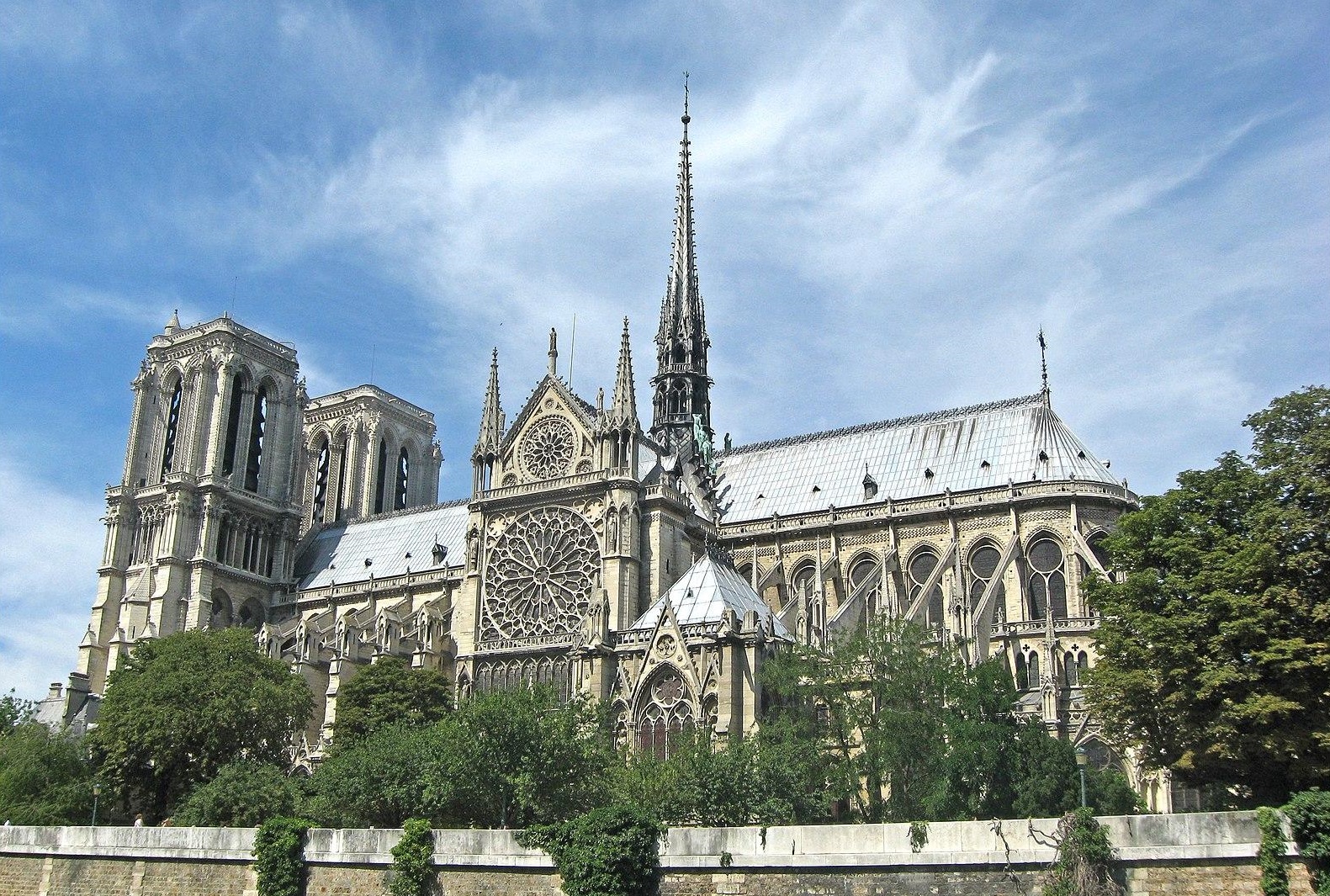
(Gothic) Notre Dame: Made in-
Paris, France, begun mid-12th( (c.1163).
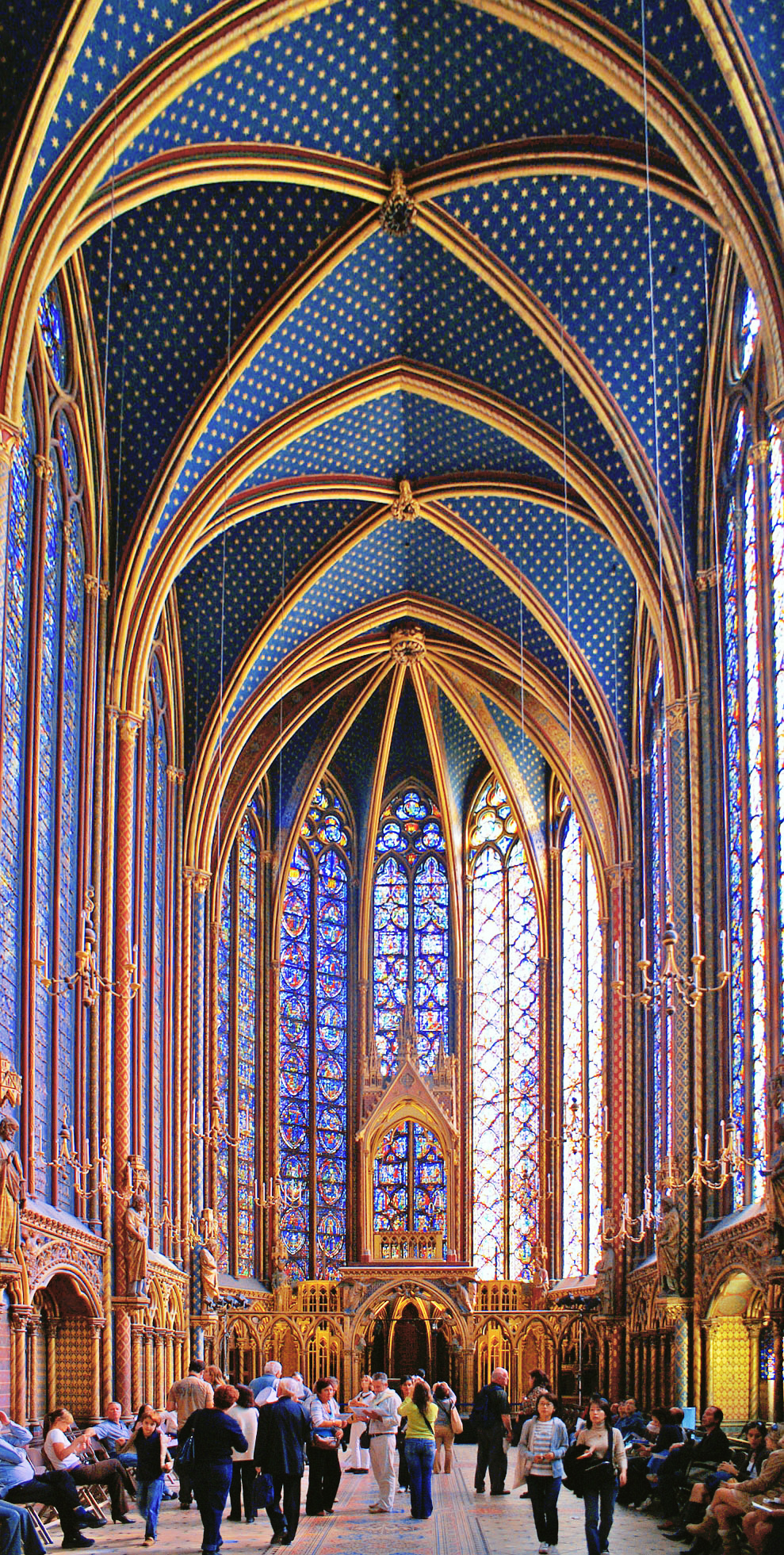
(Gothic) Sainte-Chapelle: Made in-
Paris, France, mid-13th c. (c. 1250).
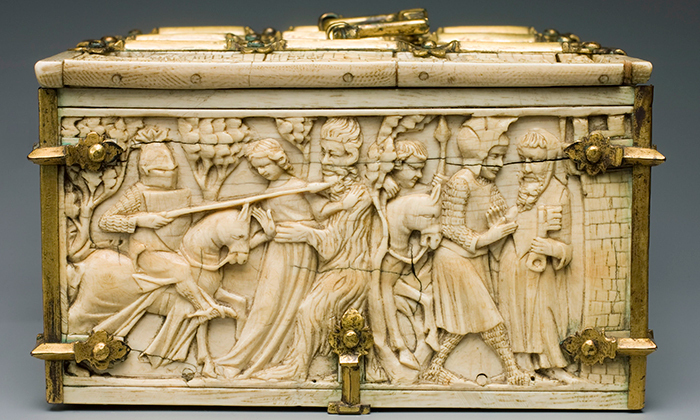
(Gothic) Jousting and Attack on the Castle of Love: Made in-
early-14th c. (c. 1330). Elephant ivory
Hieratic scale
The use of differences in size to show relative importance: the larger the figure, the greater his or her importance.
Allegory
When the subject of the artwork, or the various elements that form the composition, is used to symbolize a deeper moral or spiritual meaning such as life, death, love, virtue, justice etc.
Triptych
an artwork, usually a painting or photograph, formed as a trio. Originating in the Middle Ages, the art form was intended to be displayed together and consisted of a substantial centre with two adjoining smaller wings, which could be folded to protect the panels.
Chiaroscuro
This is an Italian term which literally means 'light-dark'. In paintings the description refers to clear tonal contrasts which are often used to suggest the volume and modelling of the subjects depicted.
Sfumato
the 'smoky' quality which blurs contours so that figures emerge from a dark background by means of gradual tonal modulations without any harsh outlines.
indulgences
a forgiveness from punishment of sins that is granted by the Catholic Church; traditionally, gaining an indulgence required rigorous prayer and contemplation, physical self-denial, and service to others, but by the late Middle Ages it had become common for indulgences to be sold to the public for a price
Protestant Reformation
focused on the individual relationship between the worshipper and God.
Counter-Reformation
describes the more stringent, doctrinal style of Christian art which was developed during the period c. 1560-1700, in response to Martin Luther's revolt against Rome (1517) and the Protestant Reformation art which followed.
Renaissance
painting, sculpture, architecture, music, and literature produced during the 14th, 15th, and 16th centuries in Europe under the combined influences of an increased awareness of nature, a revival of classical learning, and a more individualistic view of man.
Mannerism
Derived from the Italian maniera, meaning simply “style,” mannerism is sometimes defined as the “stylish style” for its emphasis on self-conscious artifice over realistic depiction.

(Proto-Renaissance) '“Madonna Enthroned”- Made by-
Giotto
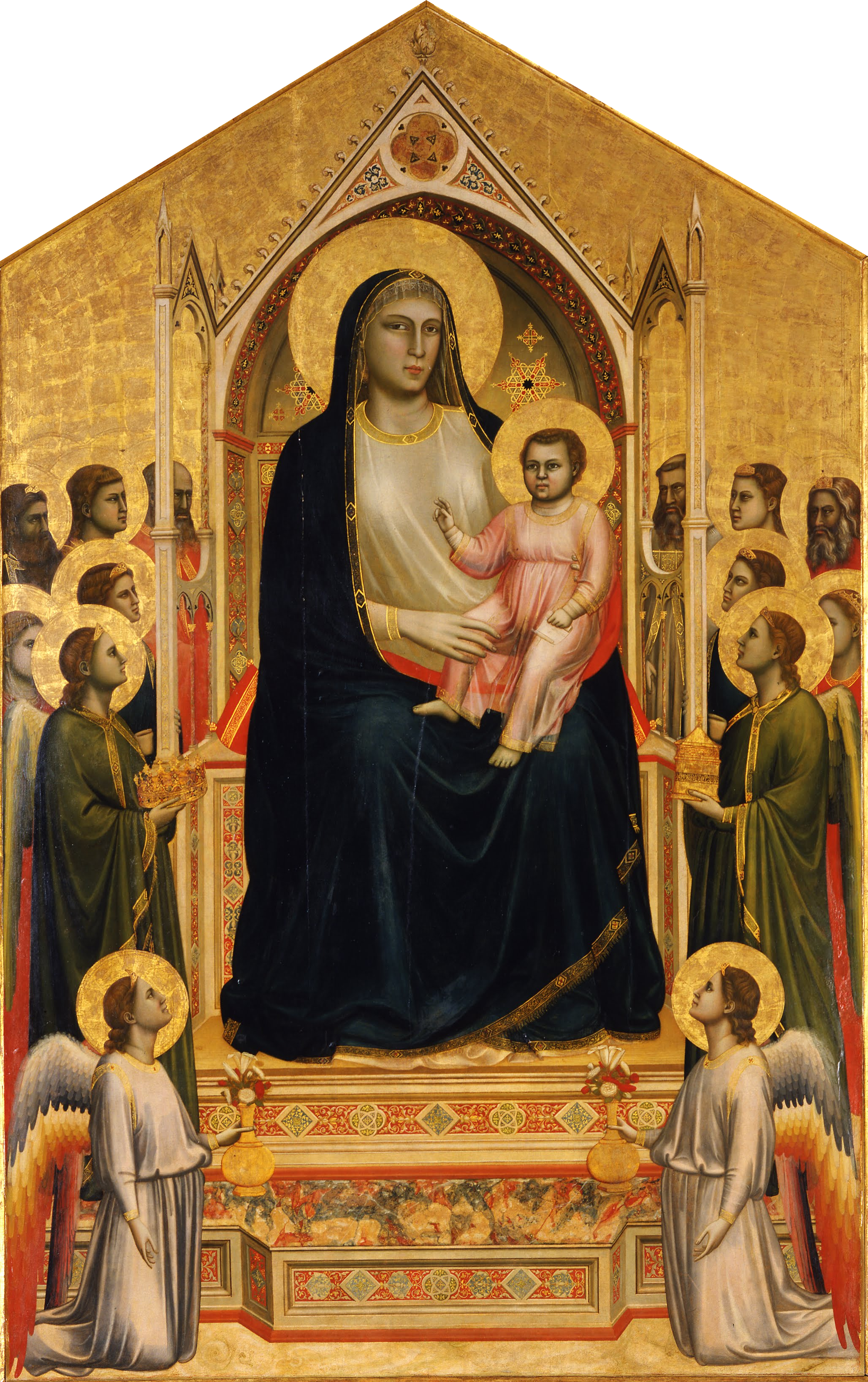
(Proto-Renaissance) '“Madonna Enthroned”- Made in-
early-14th c. (c. 1310). Painting
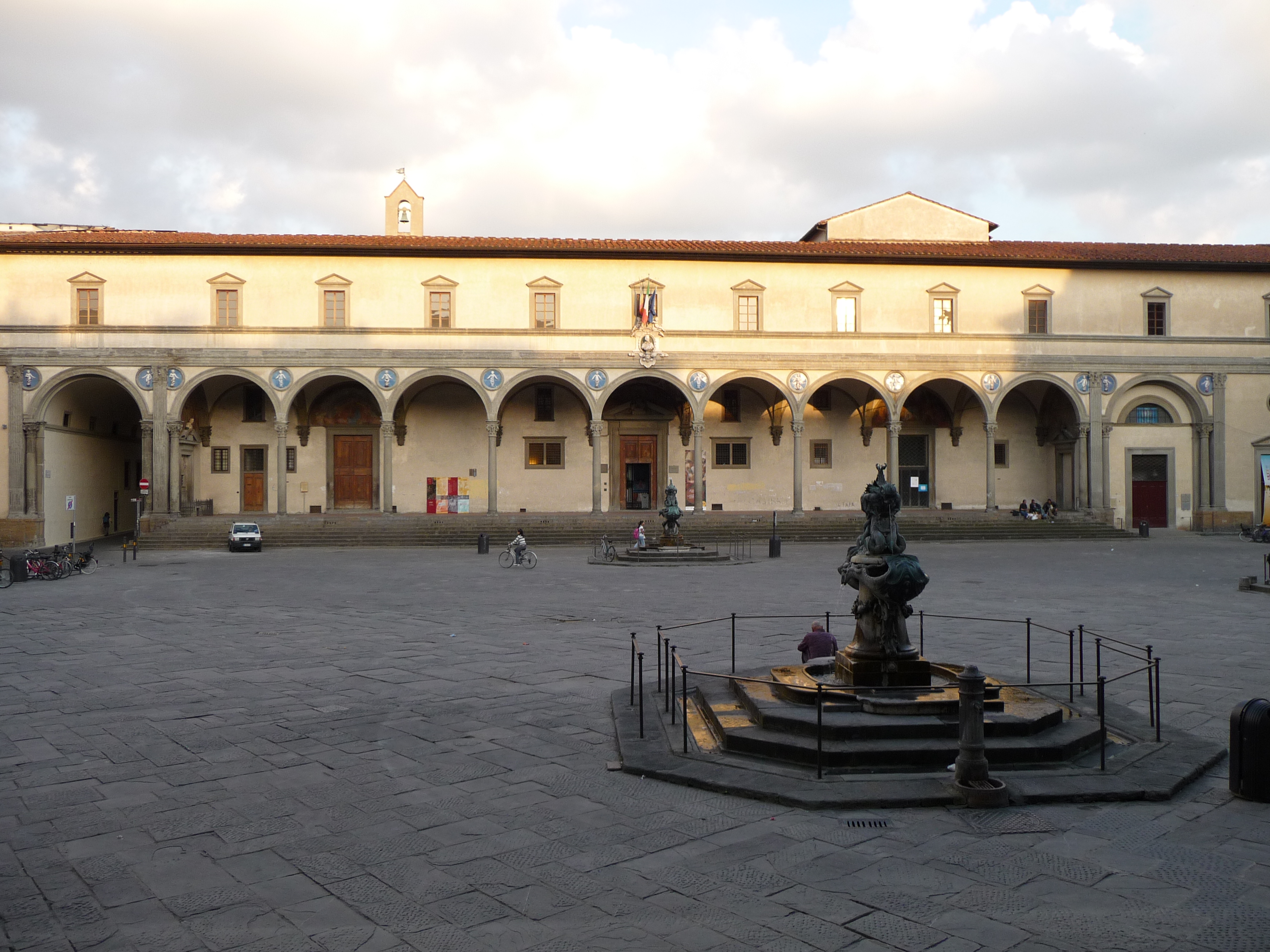
(Early Renaissance, Italy) “Hospital of the Innocents” Made by-
Brunelleschi
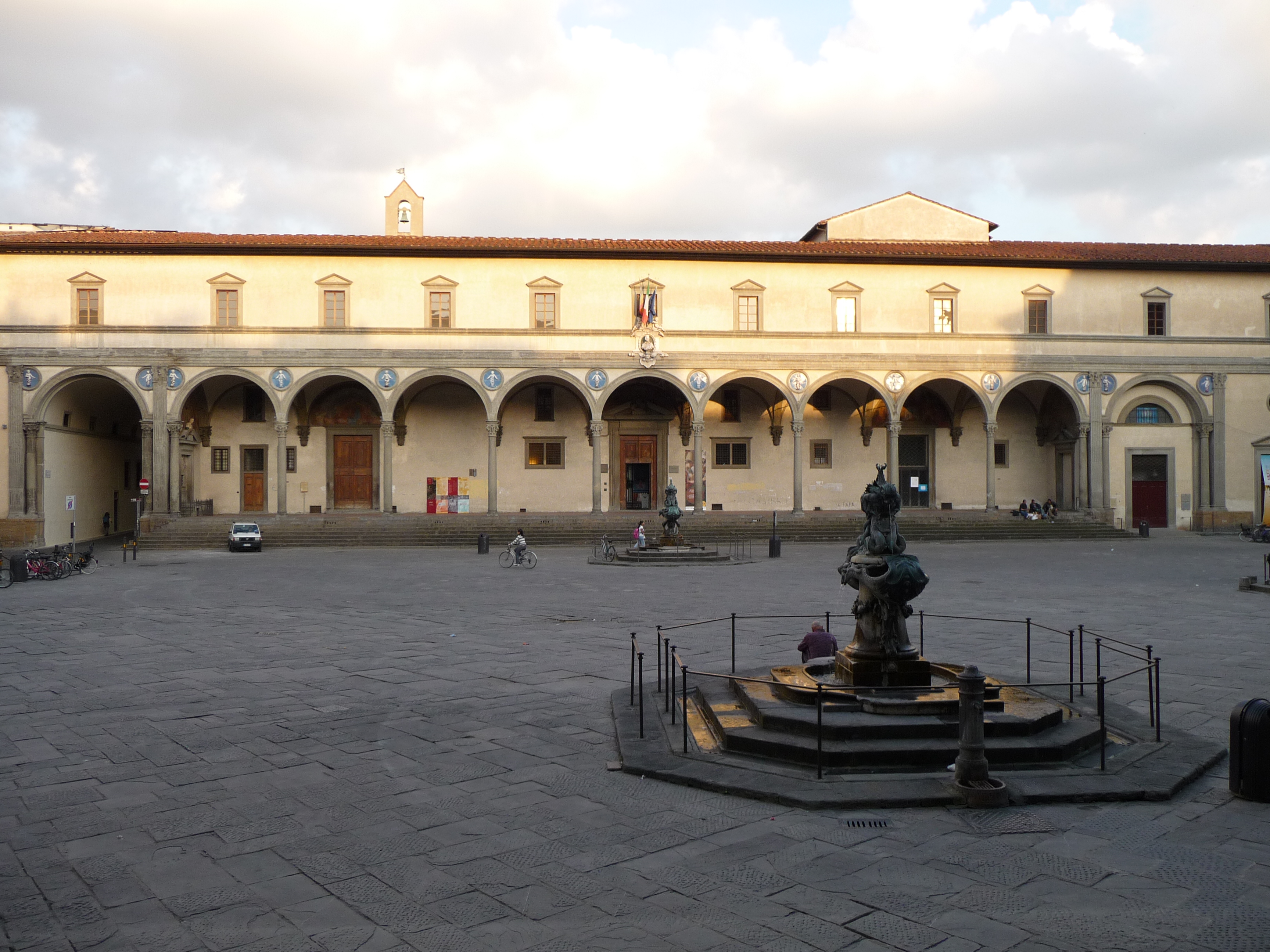
(Early Renaissance, Italy) “Hospital of the Innocents” Made in-
Florence Italy, begun early-15th c. (1419)